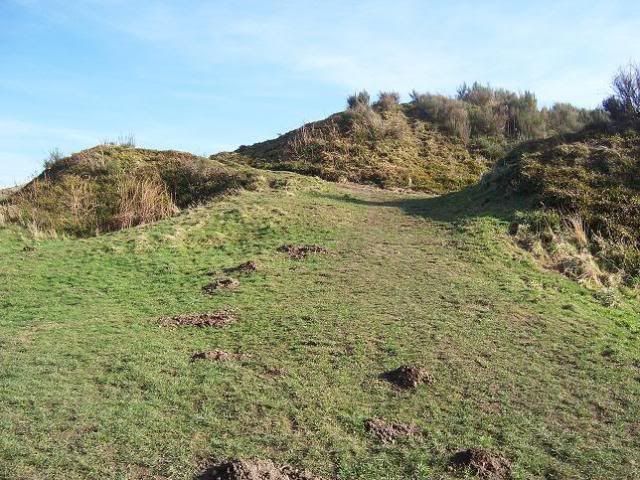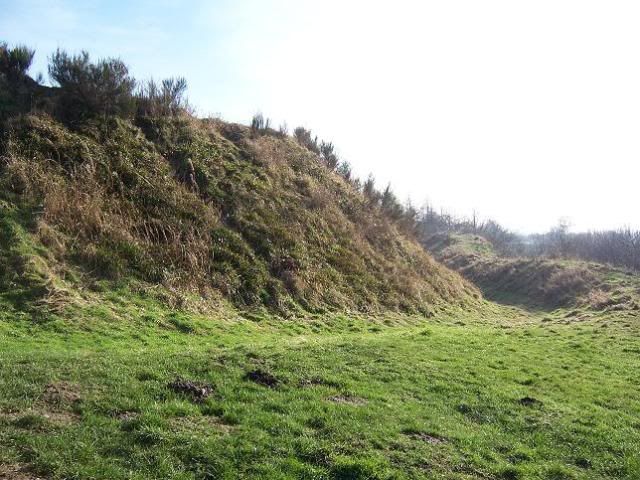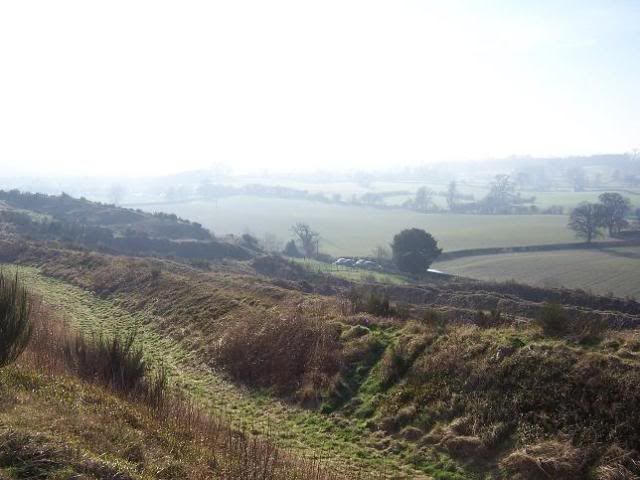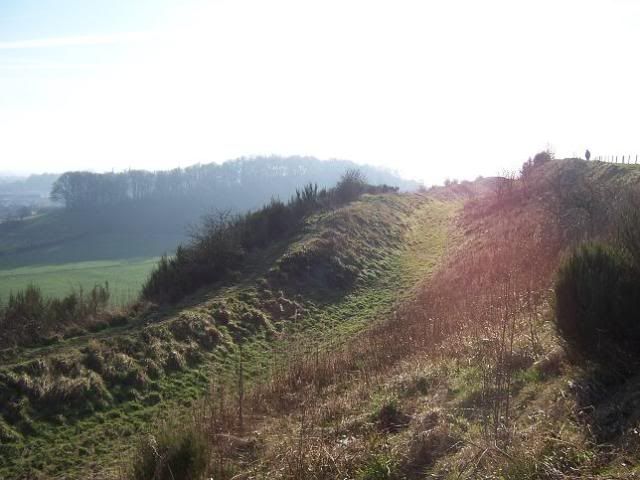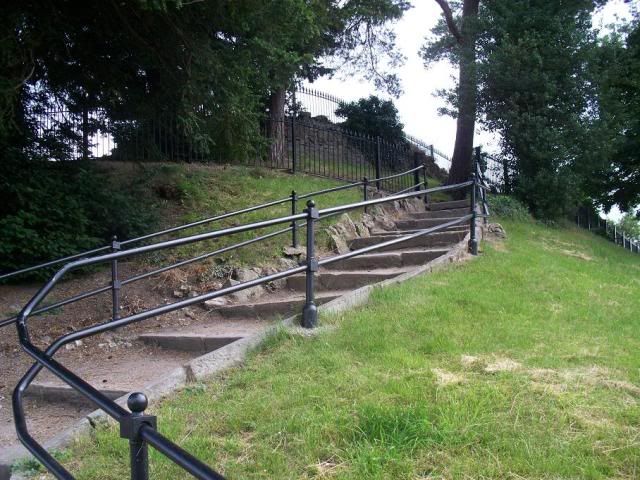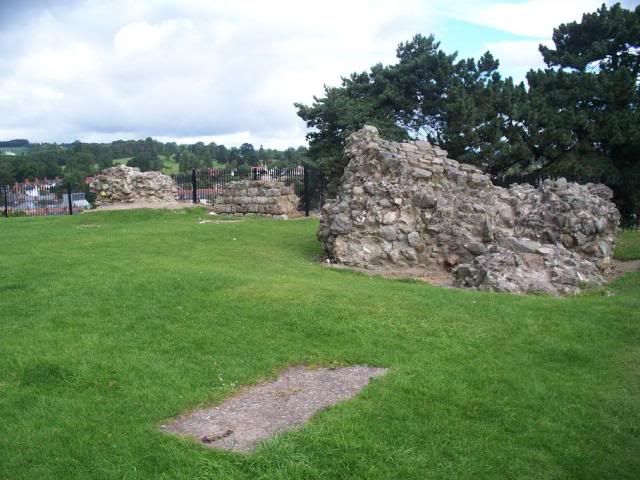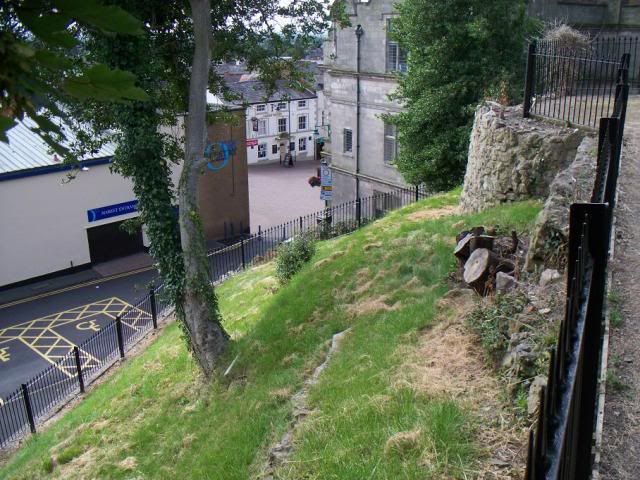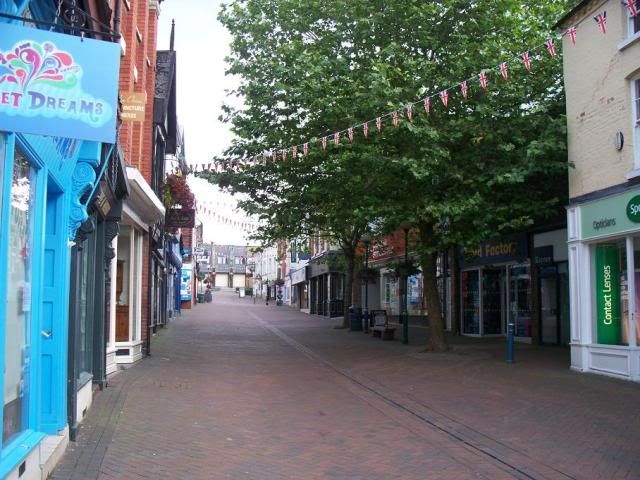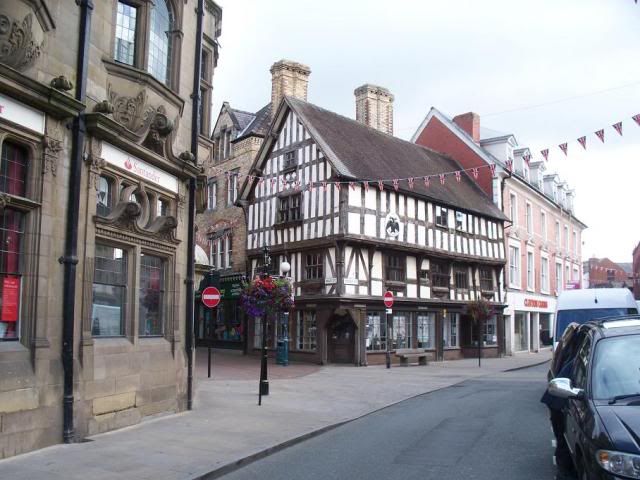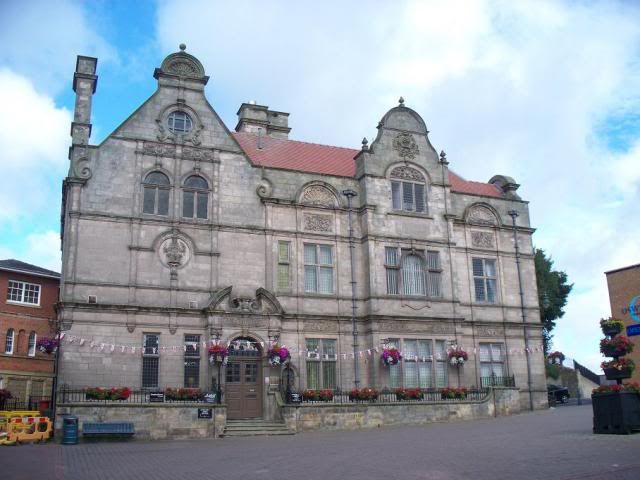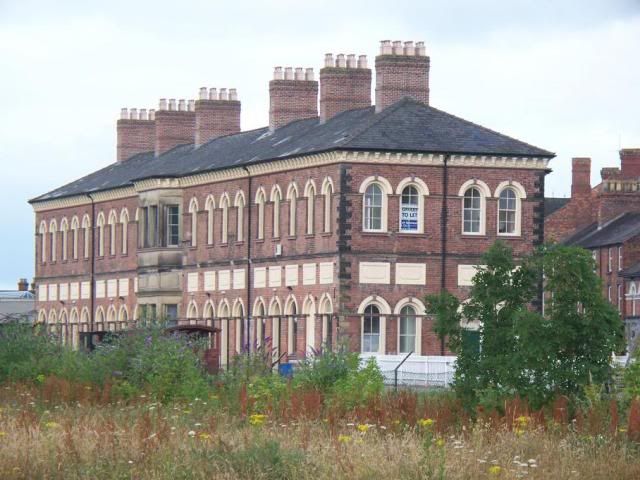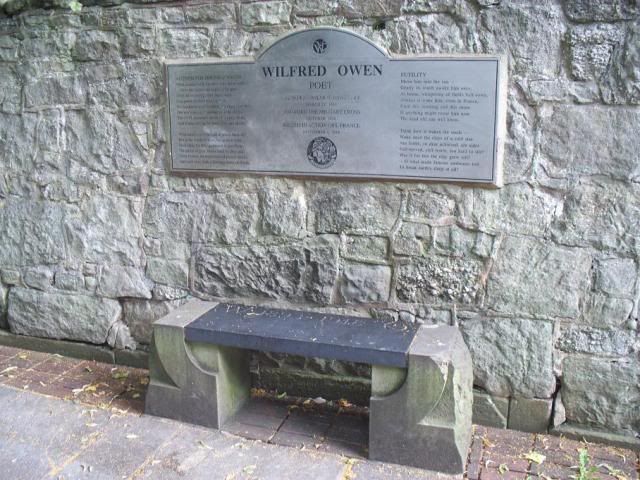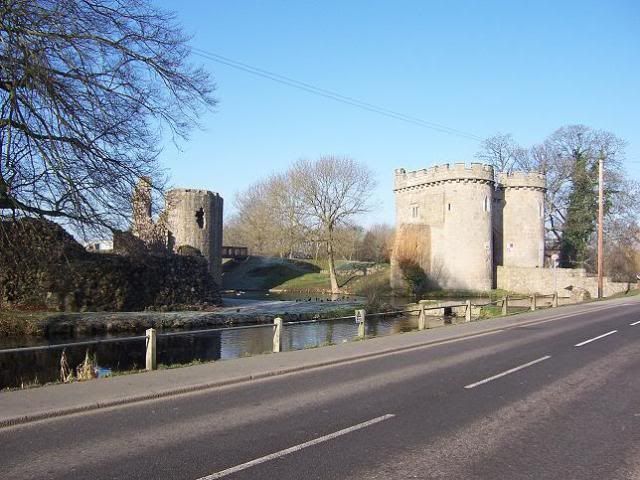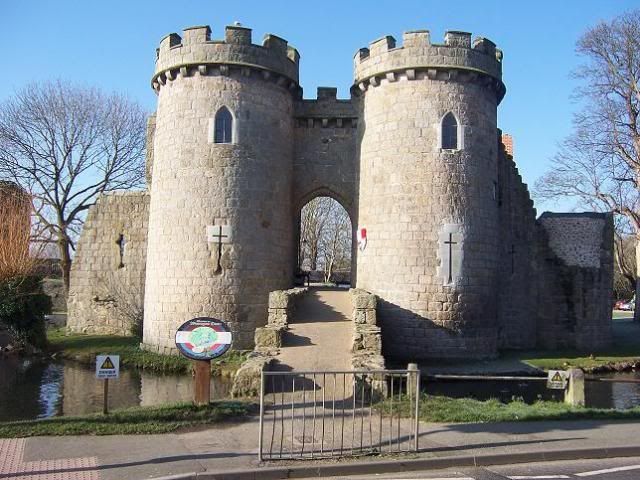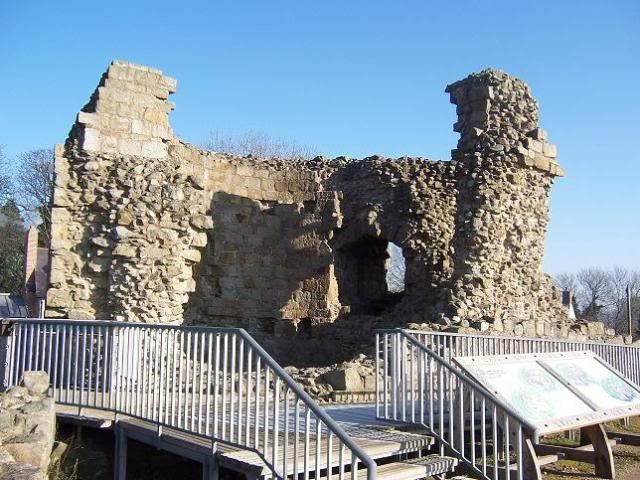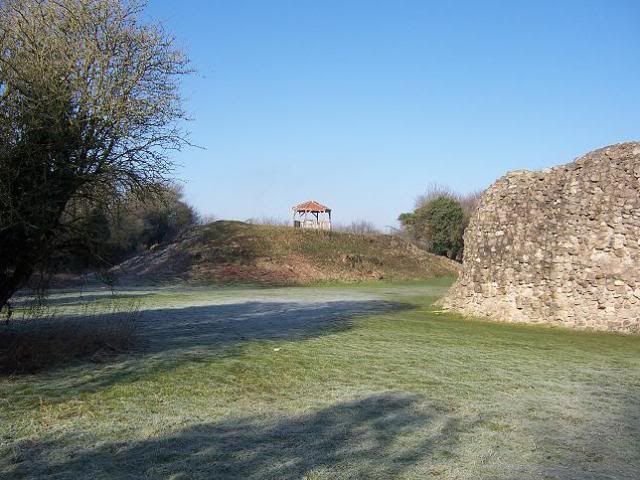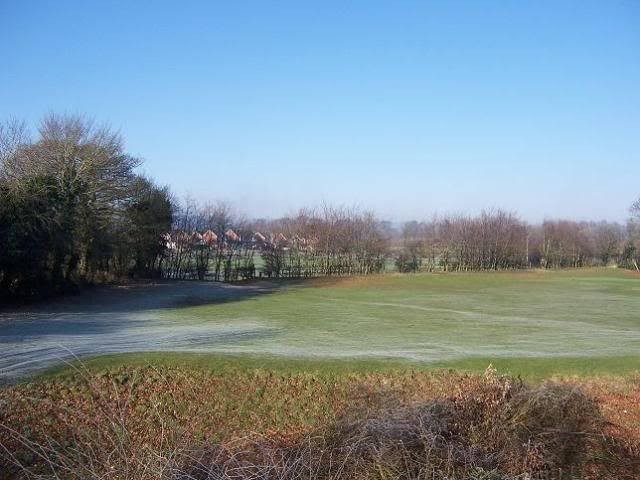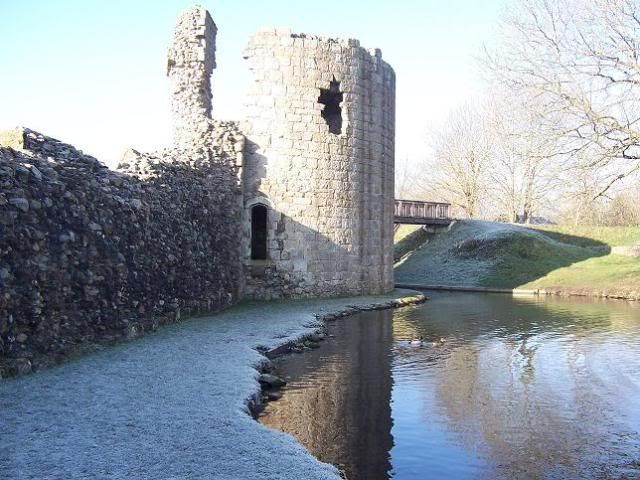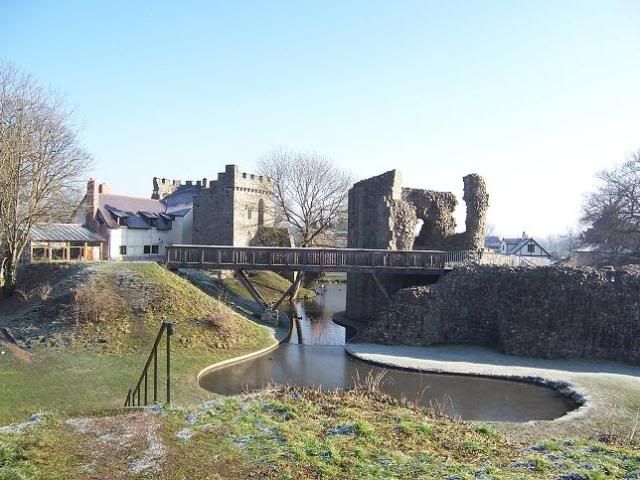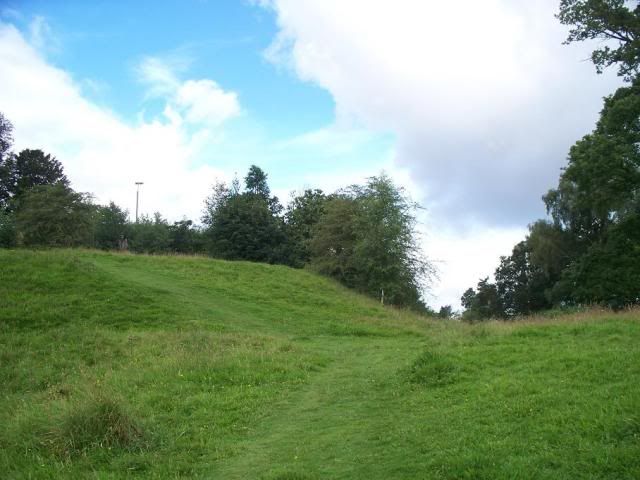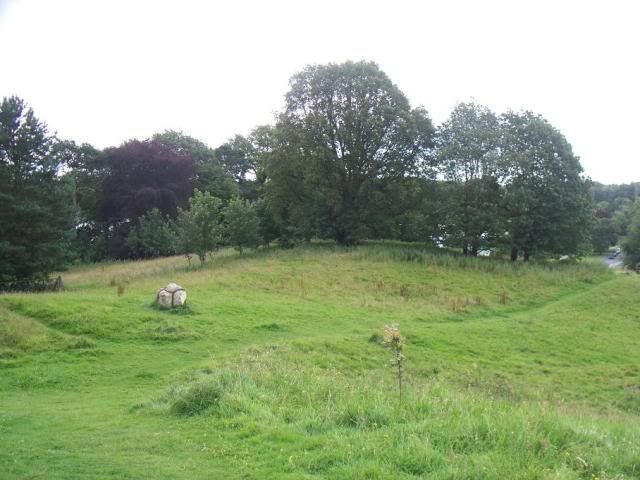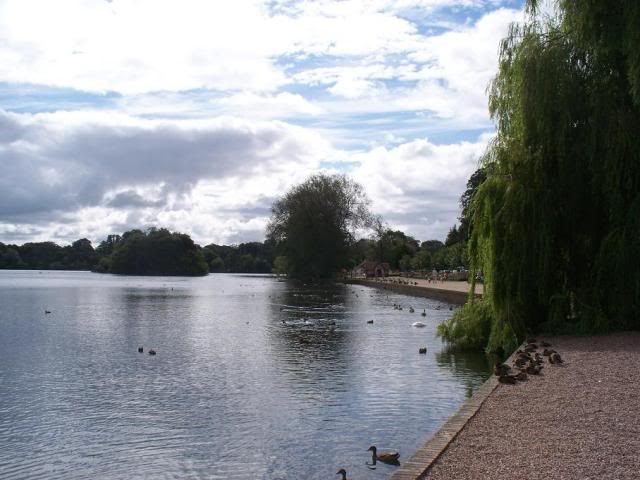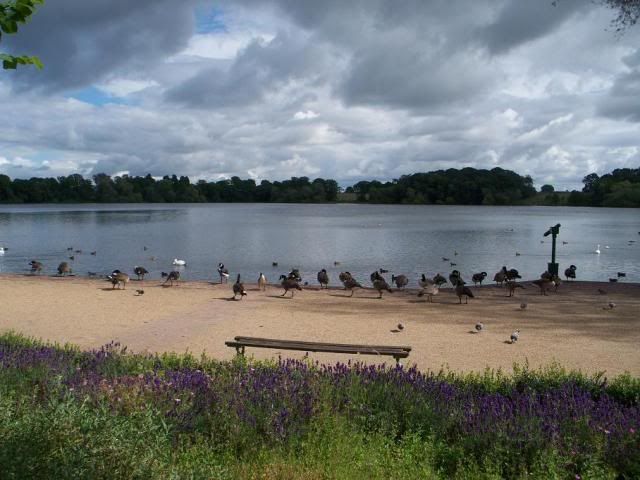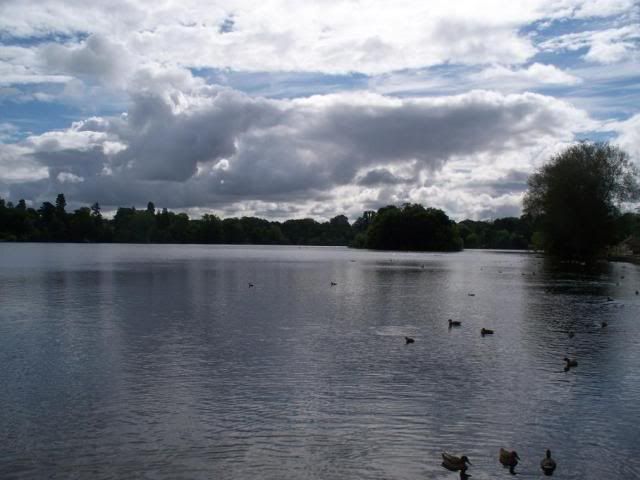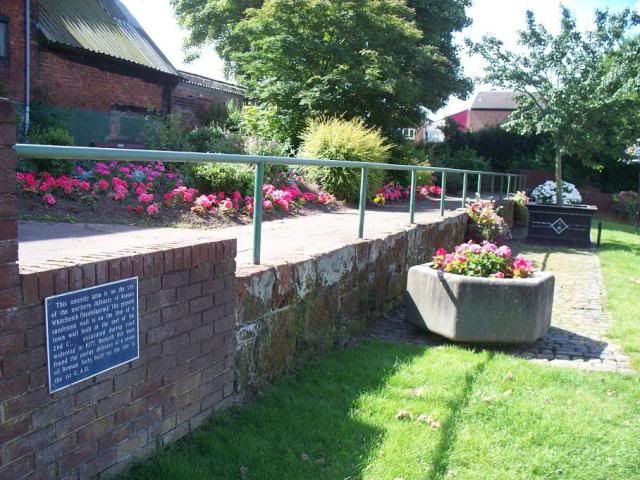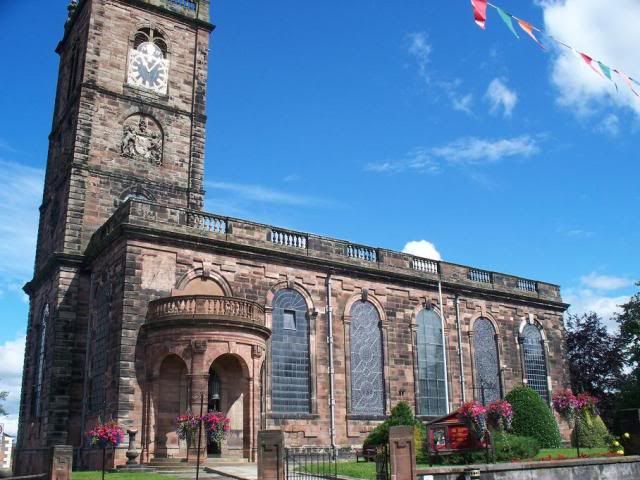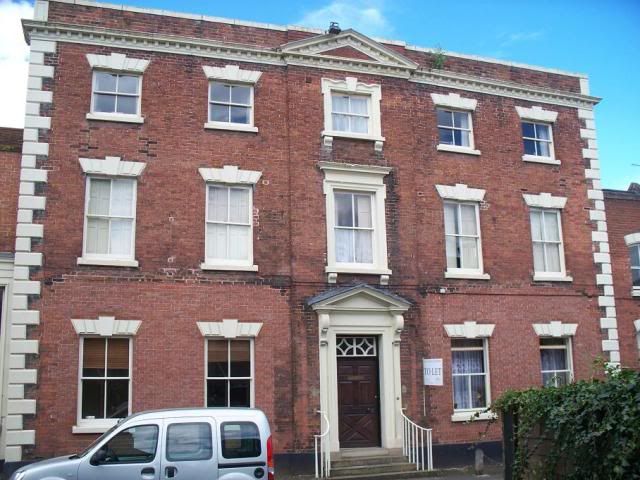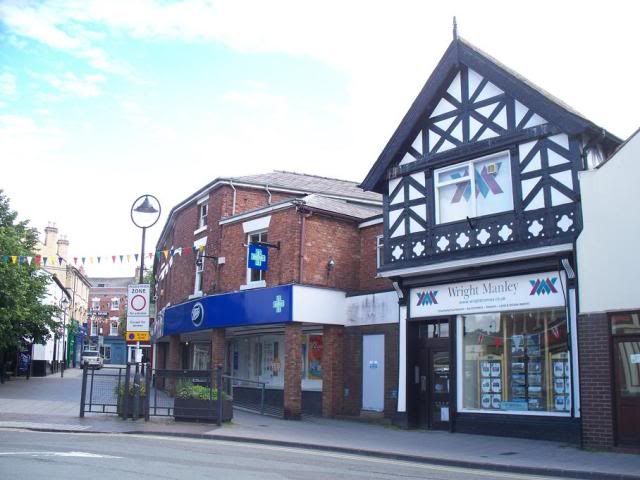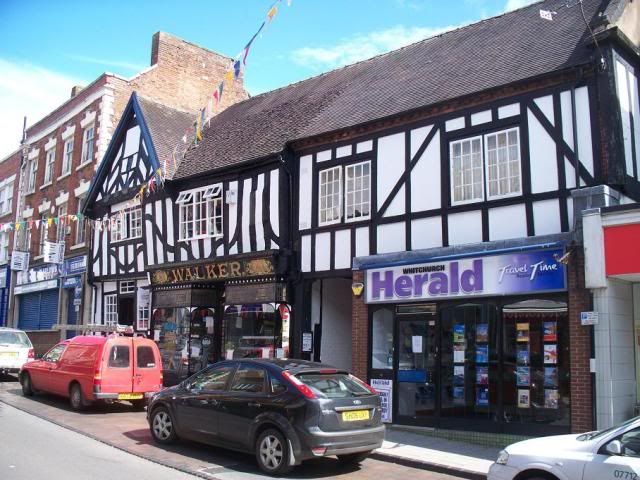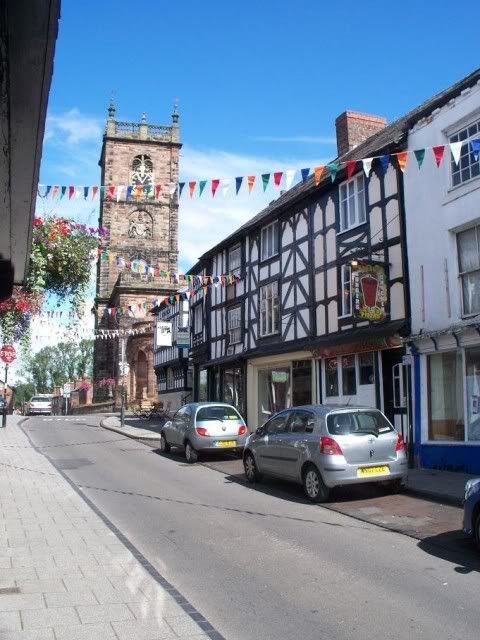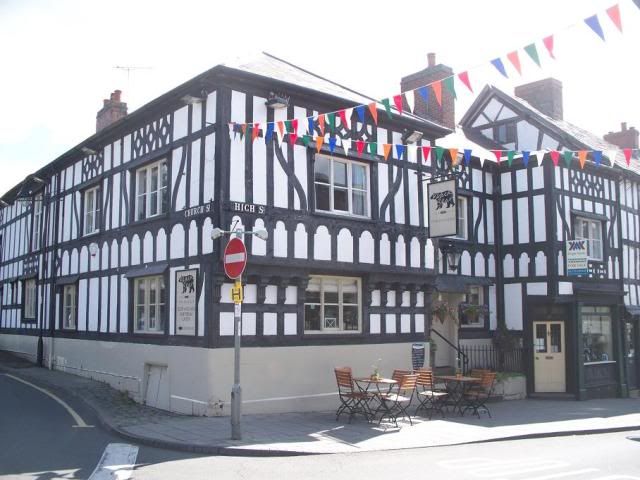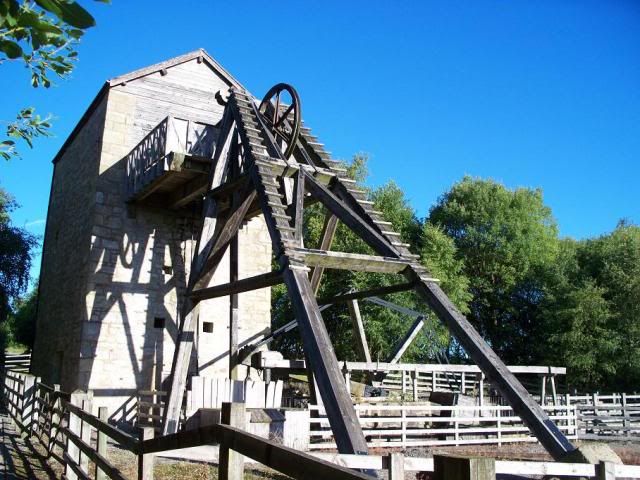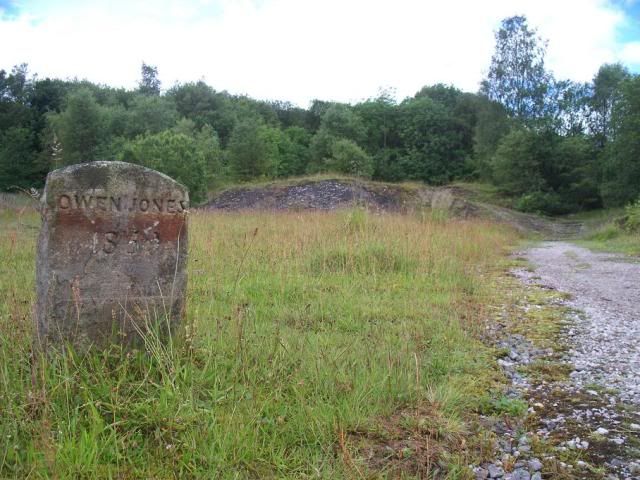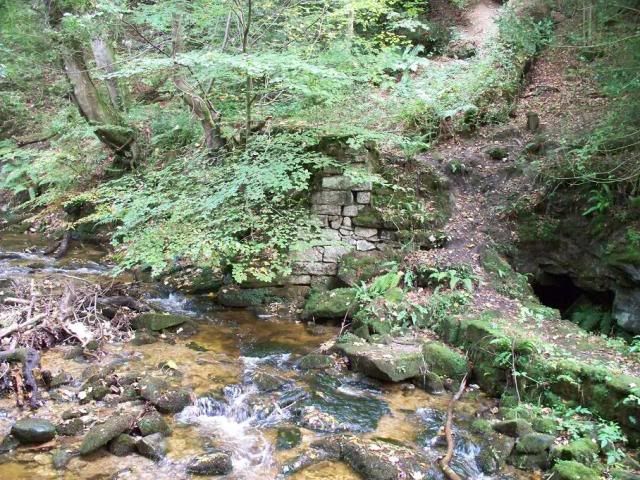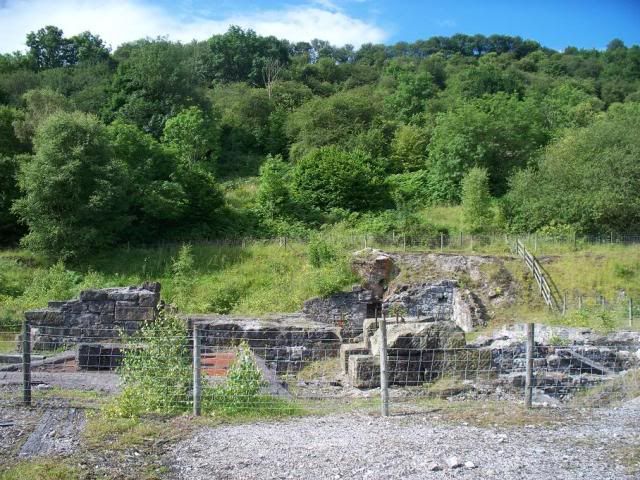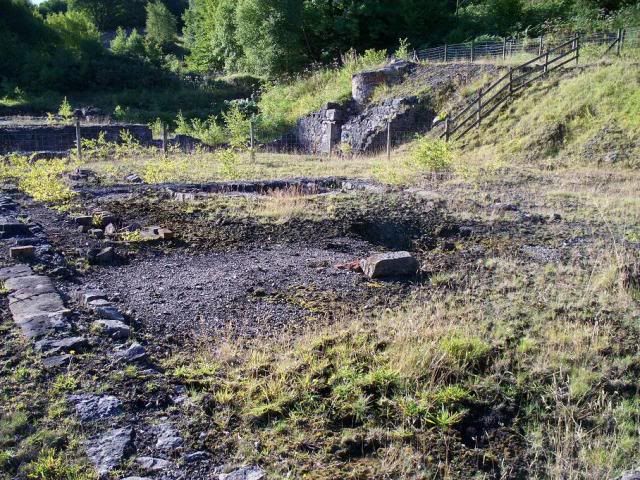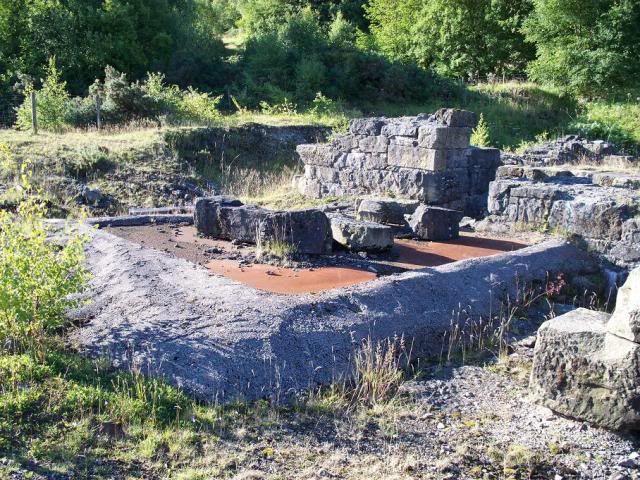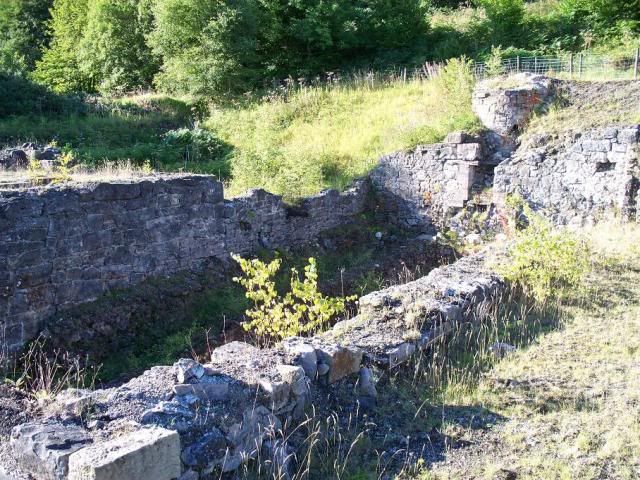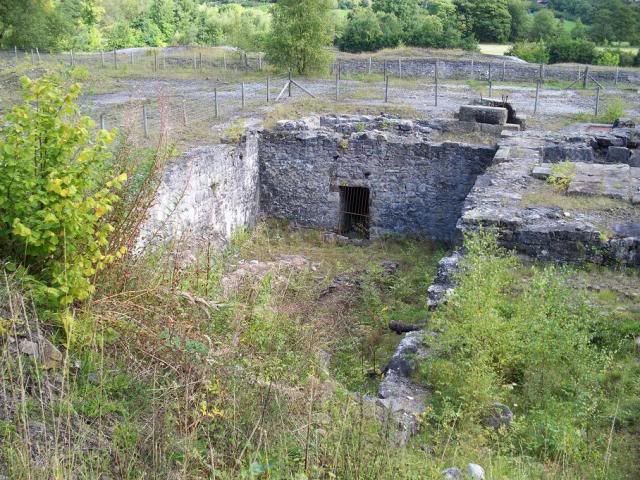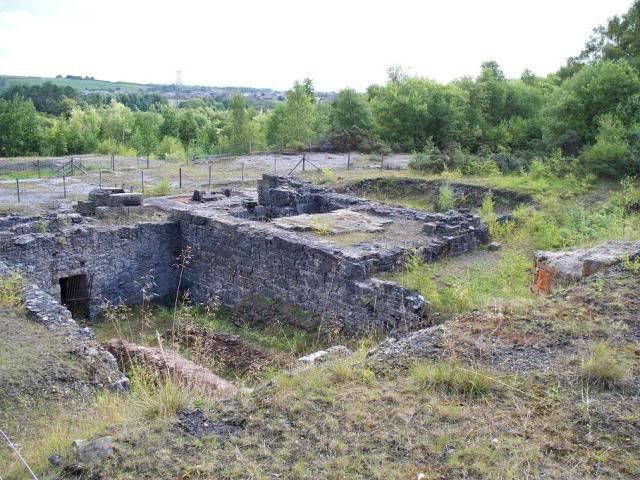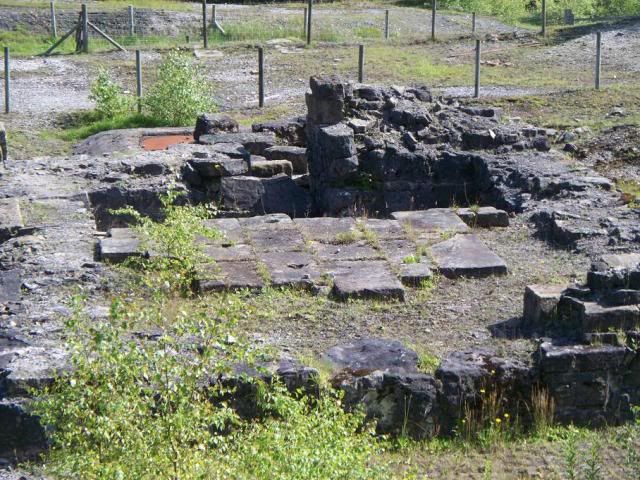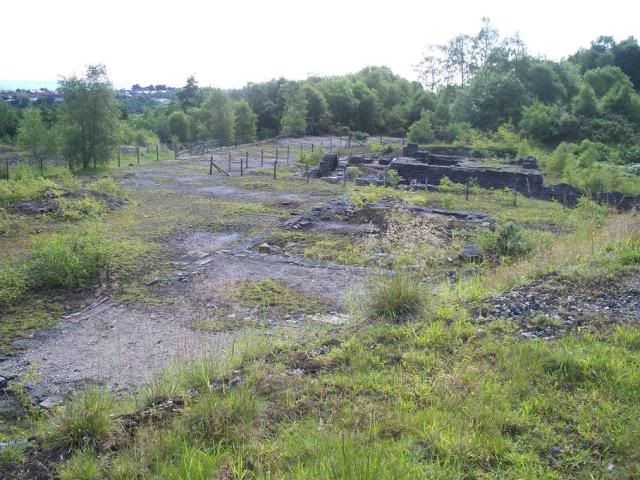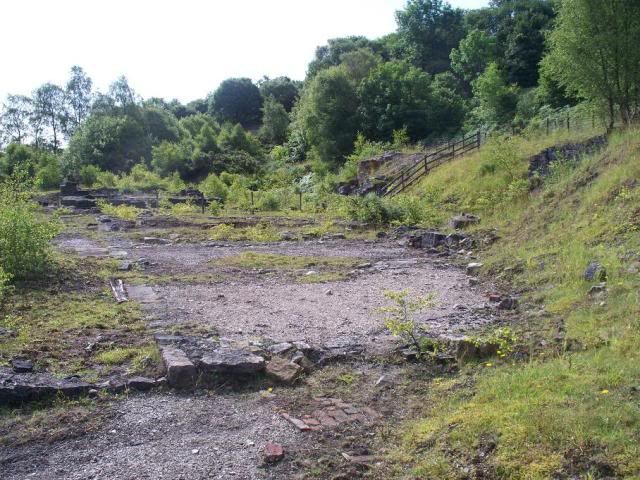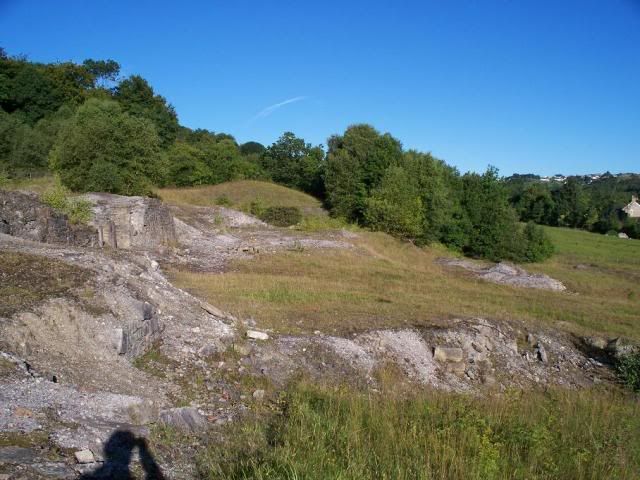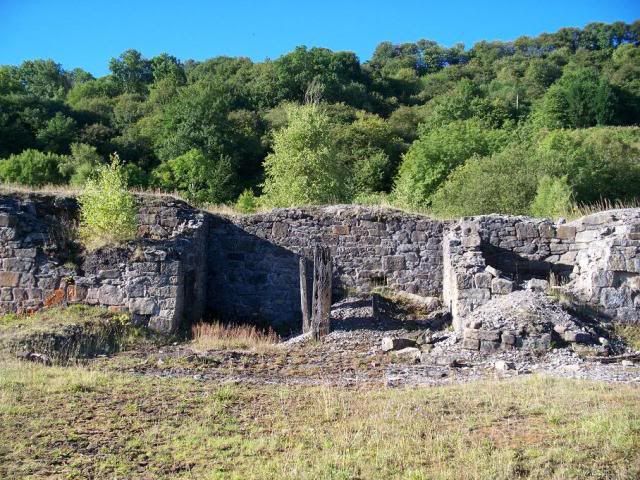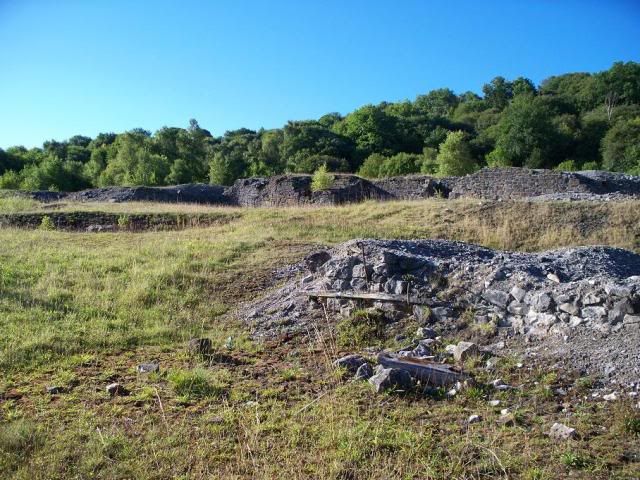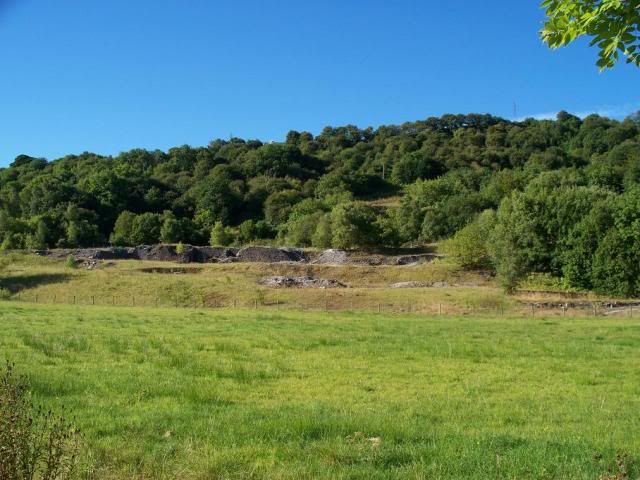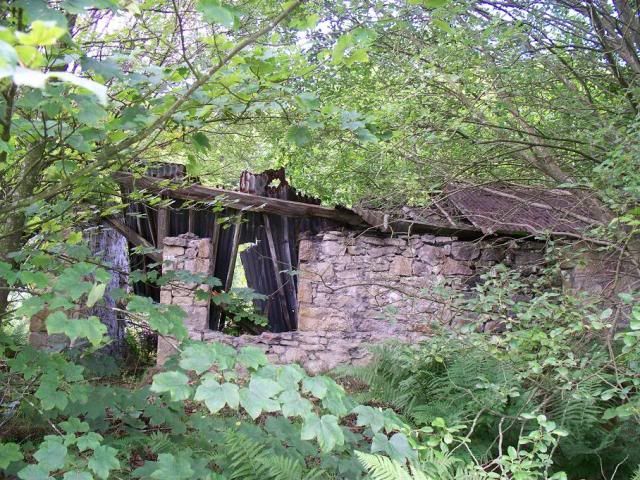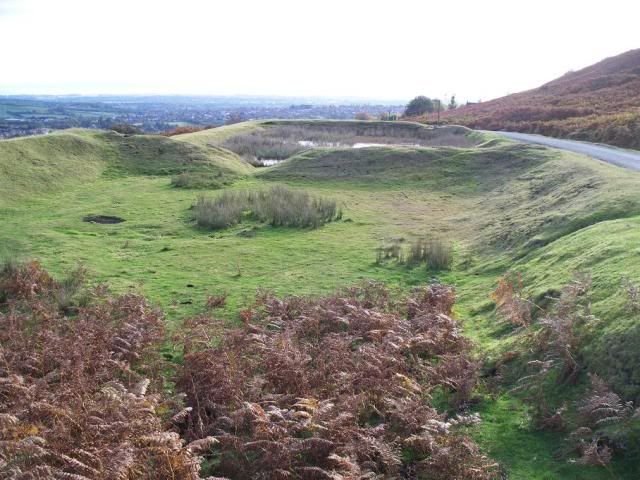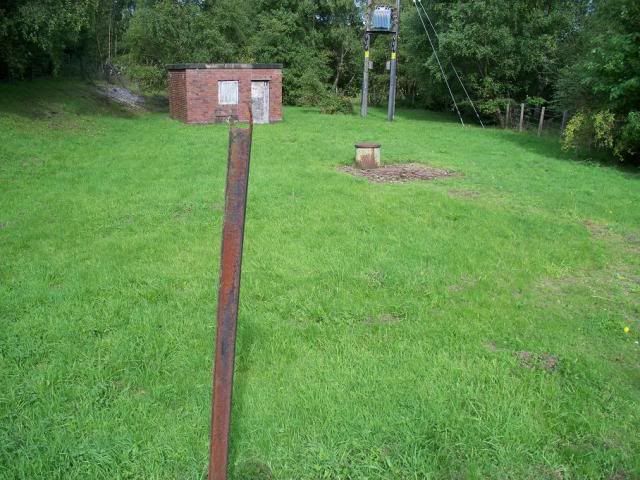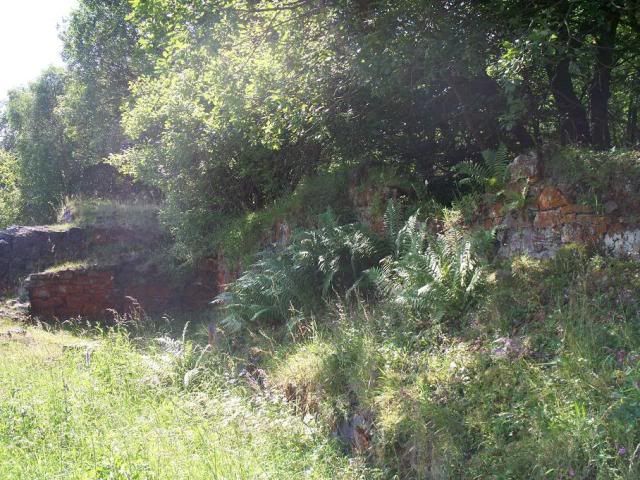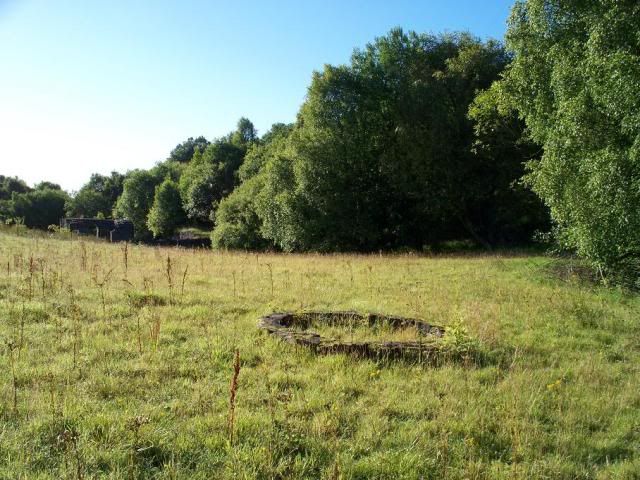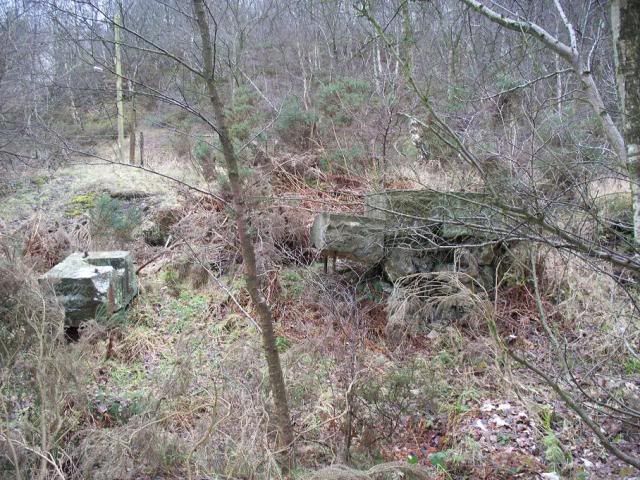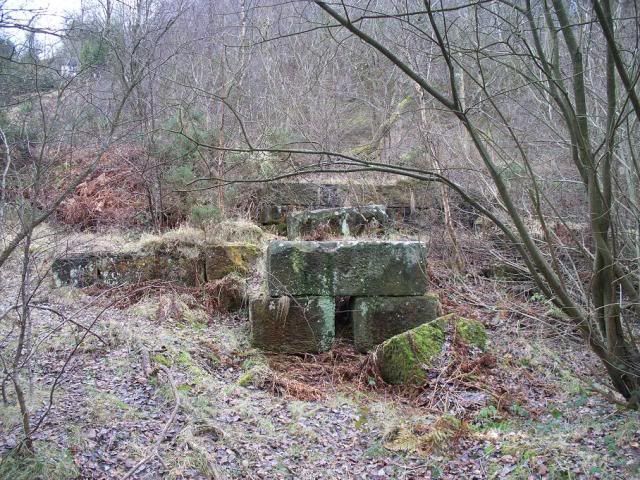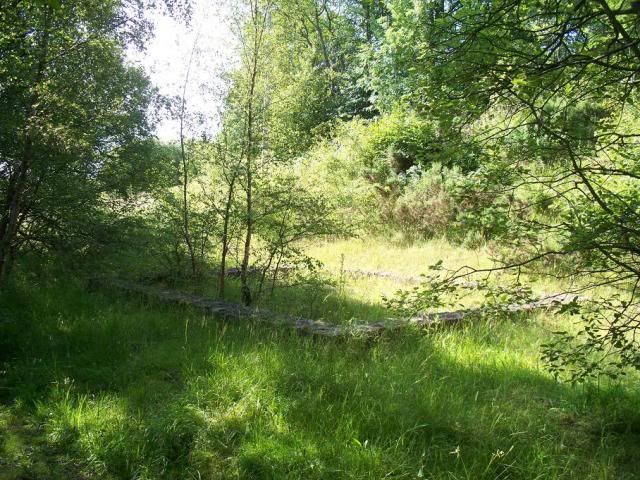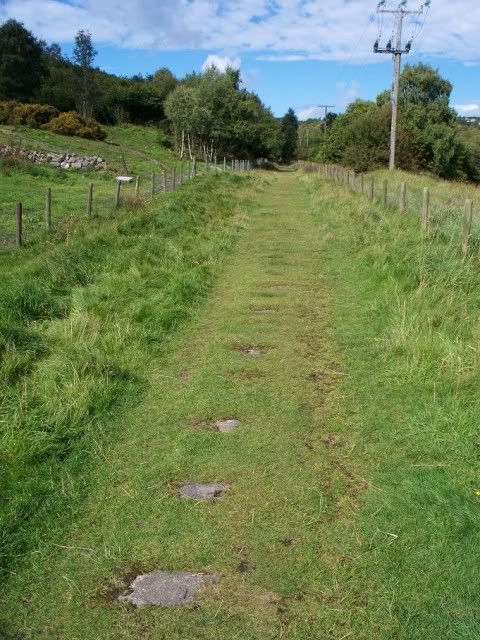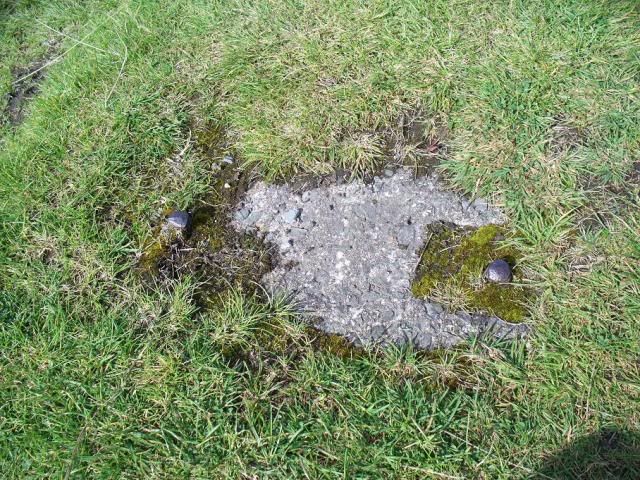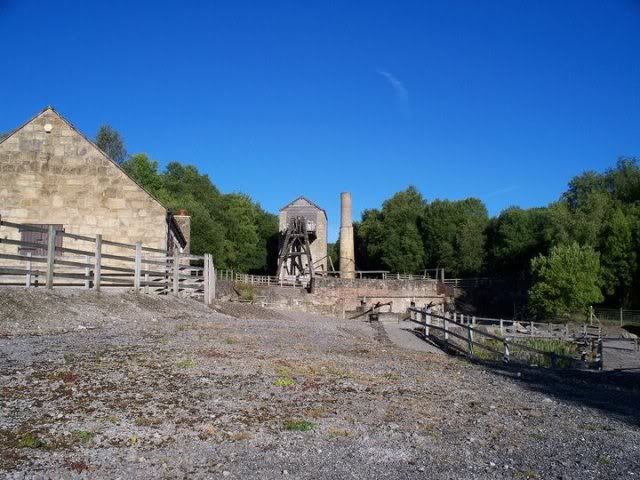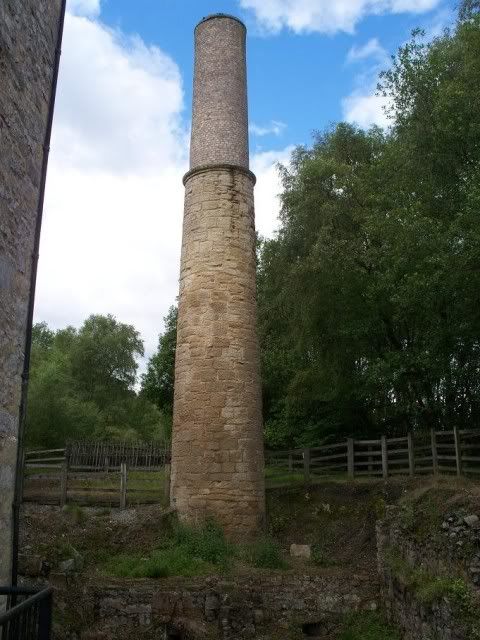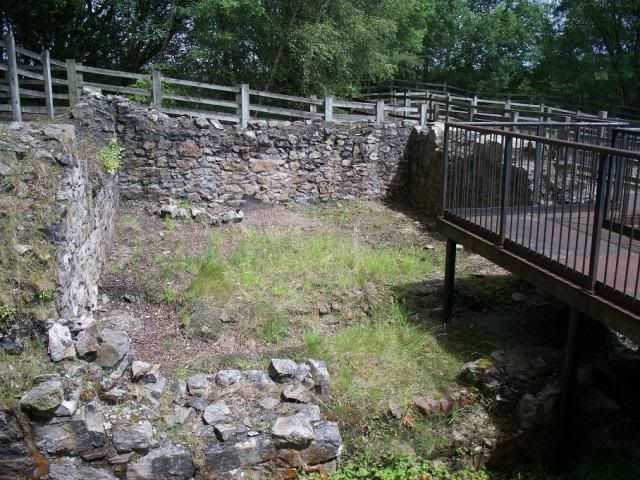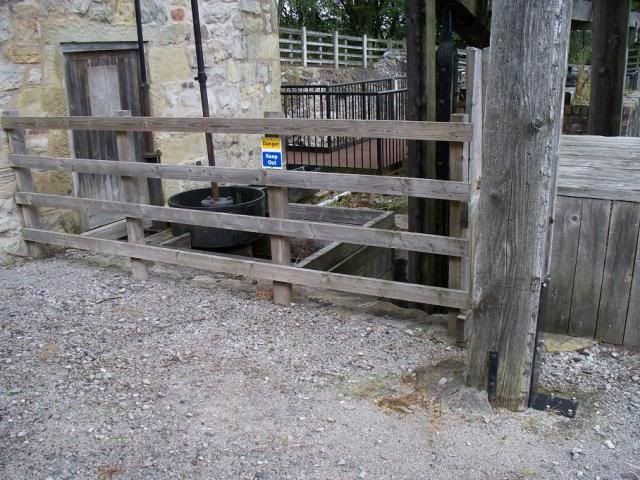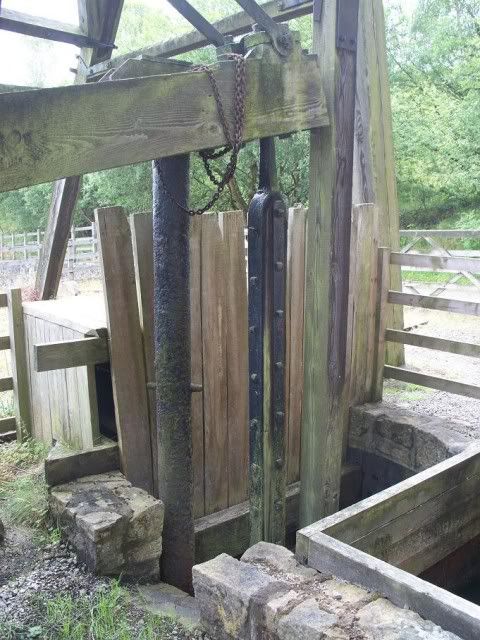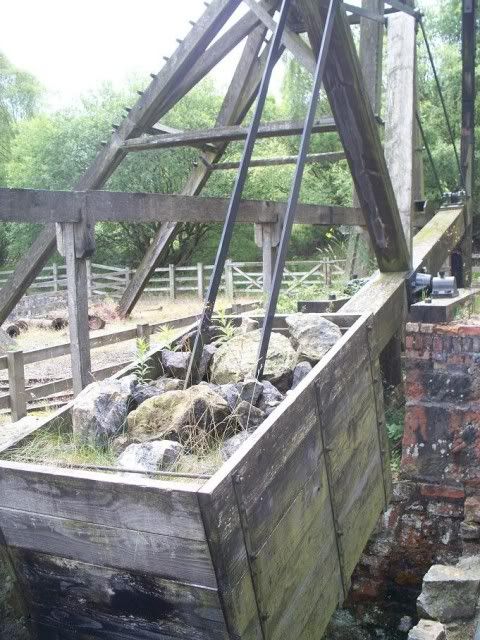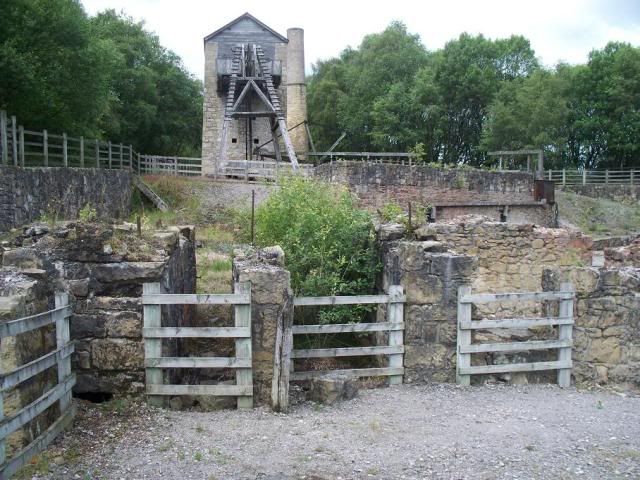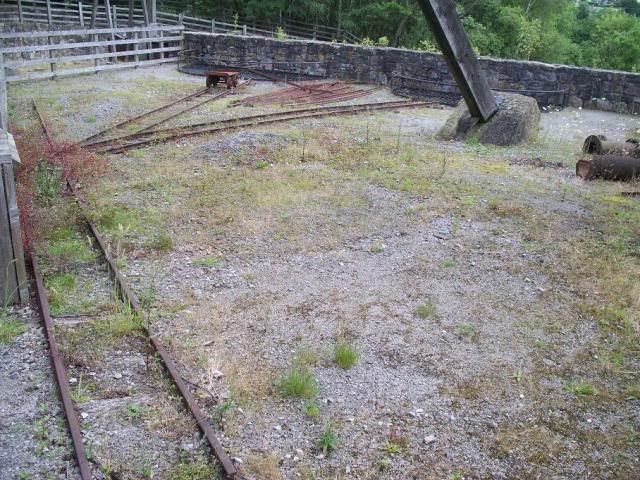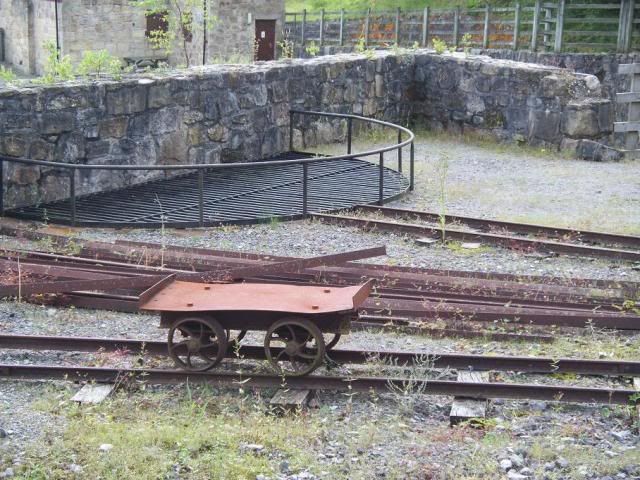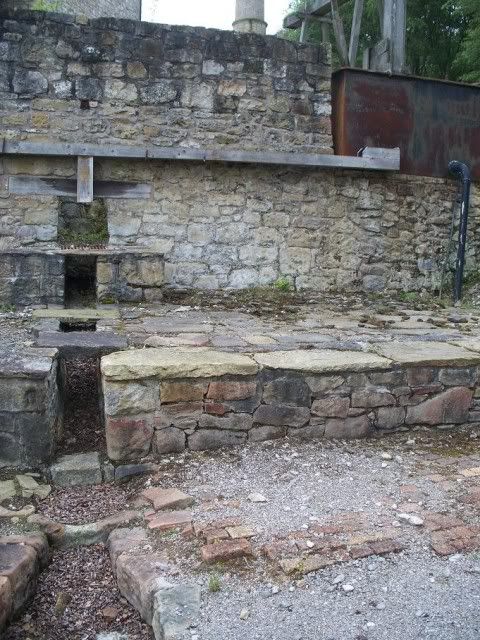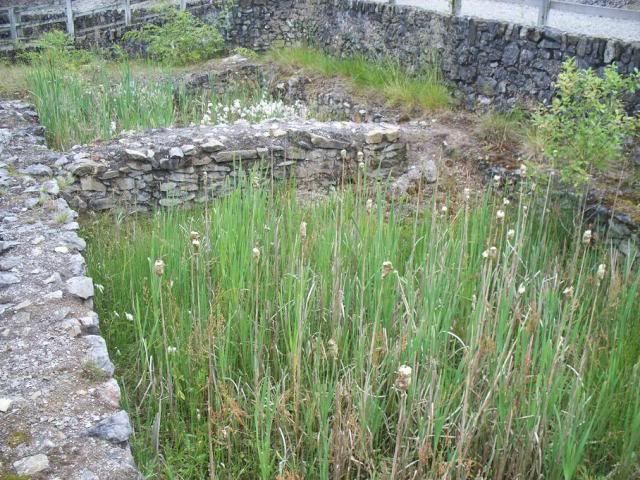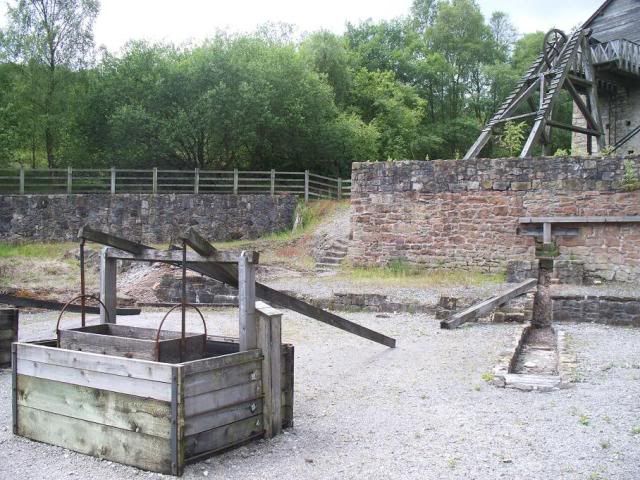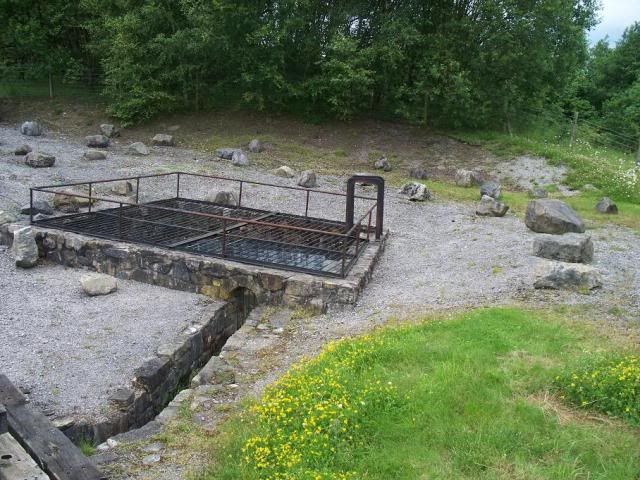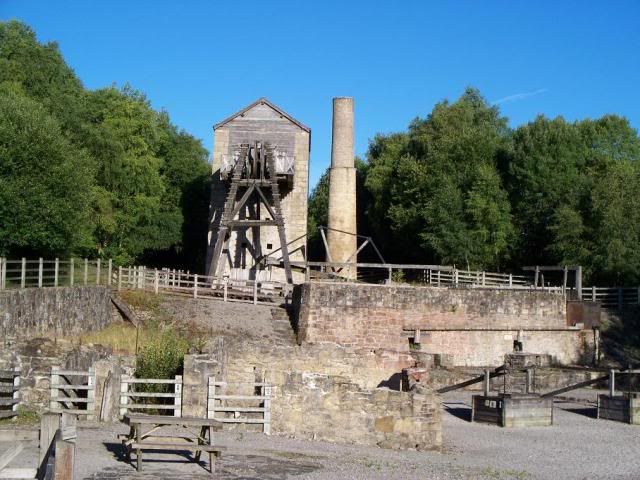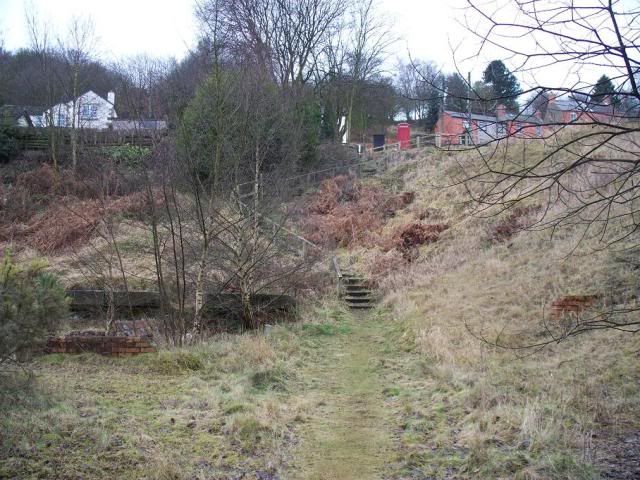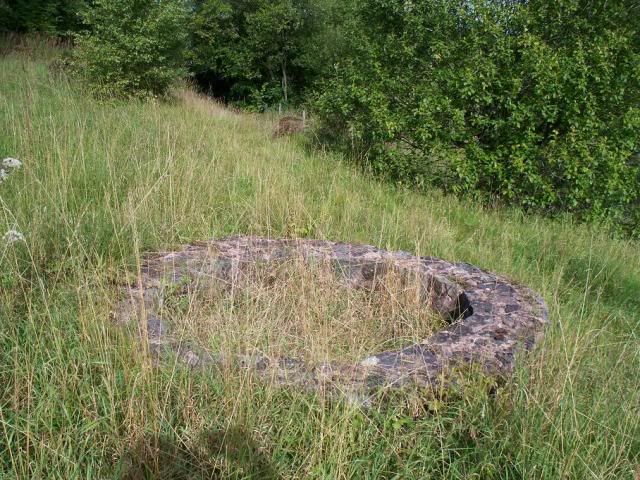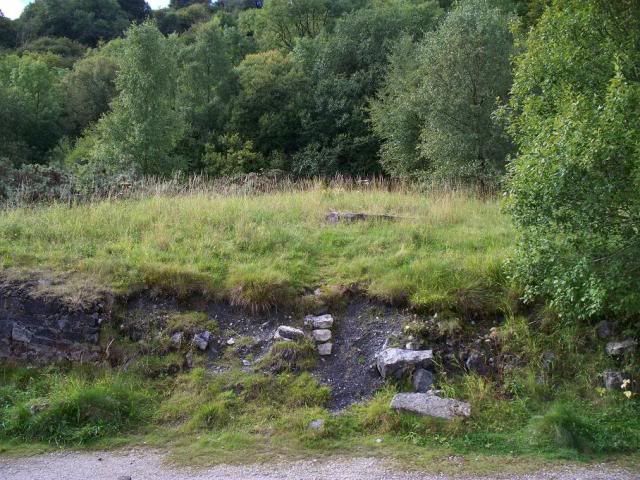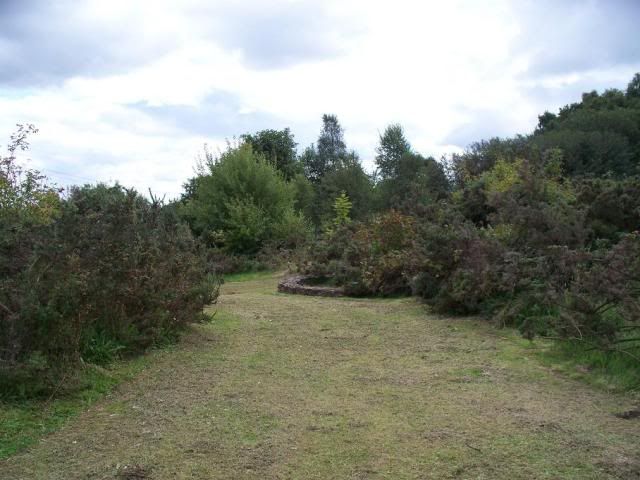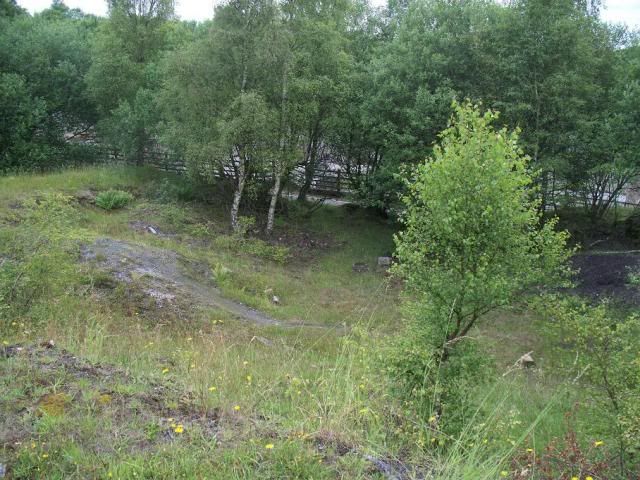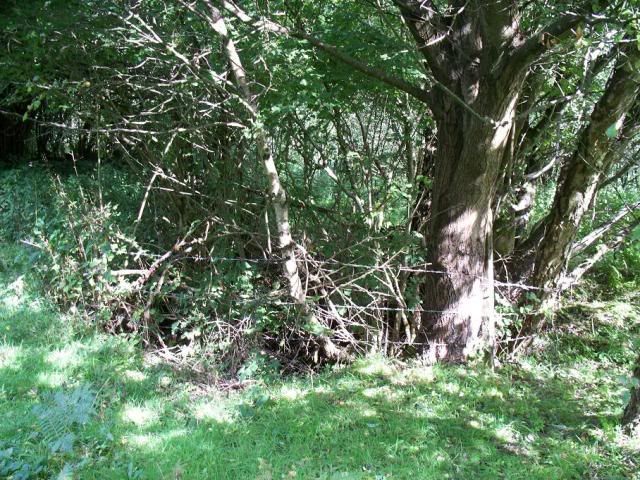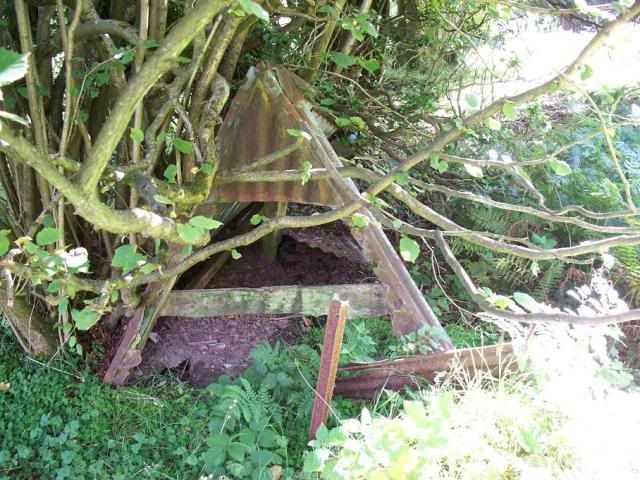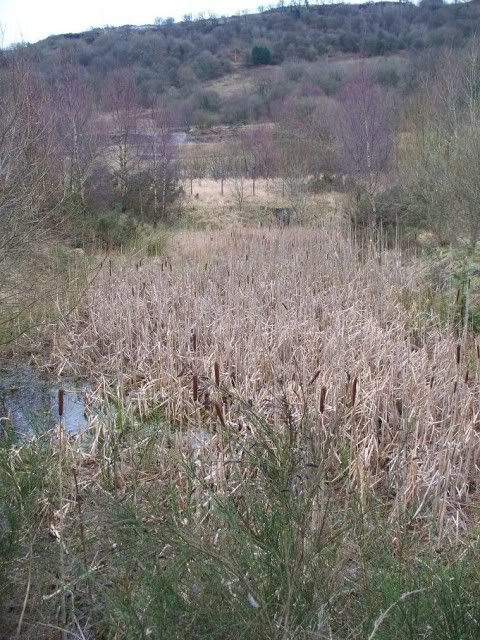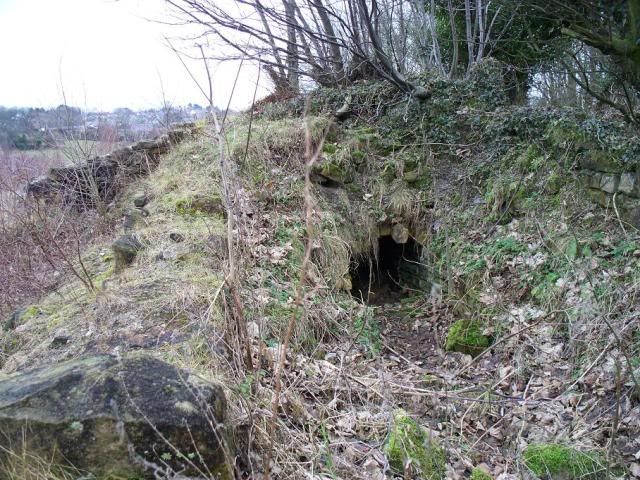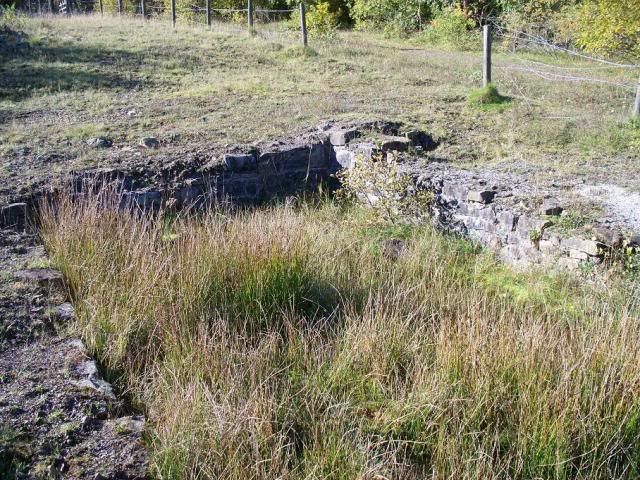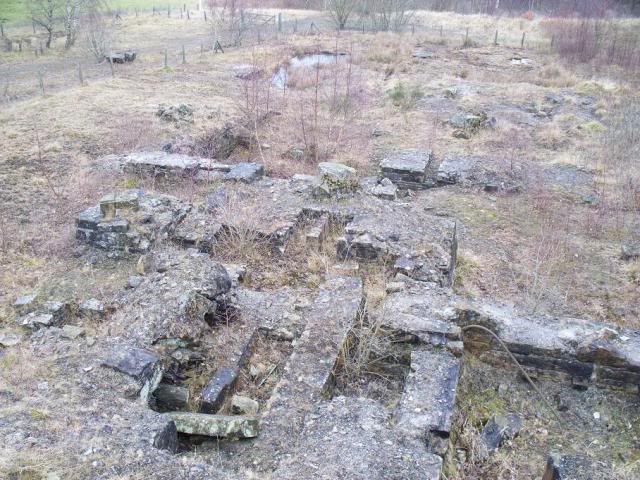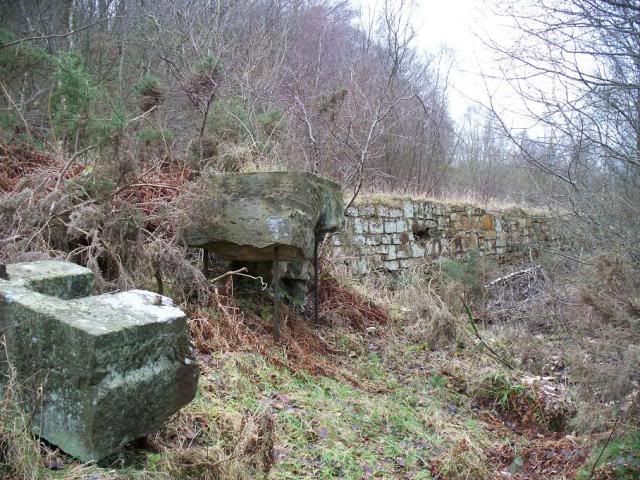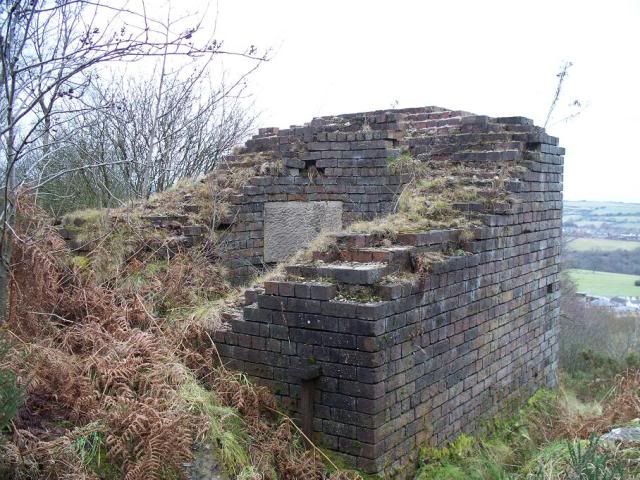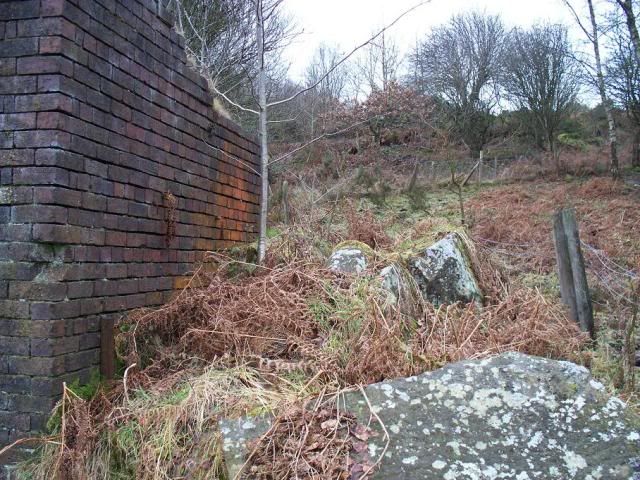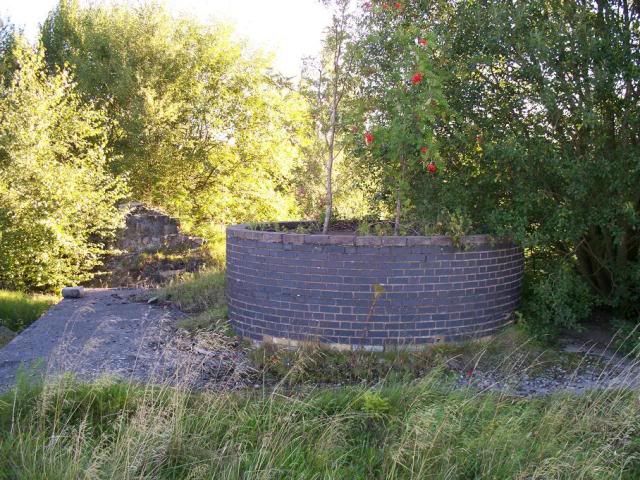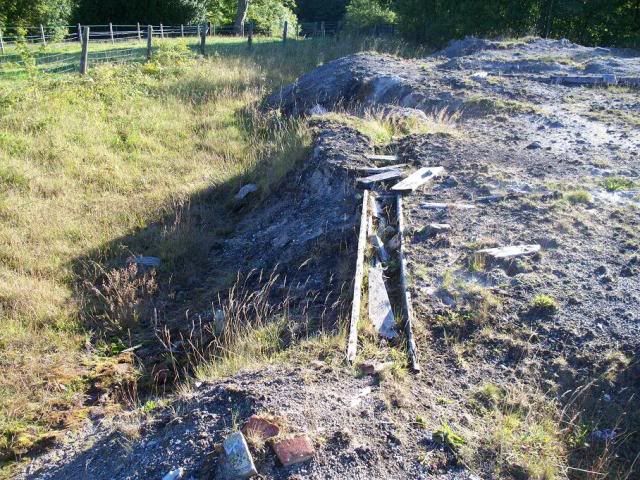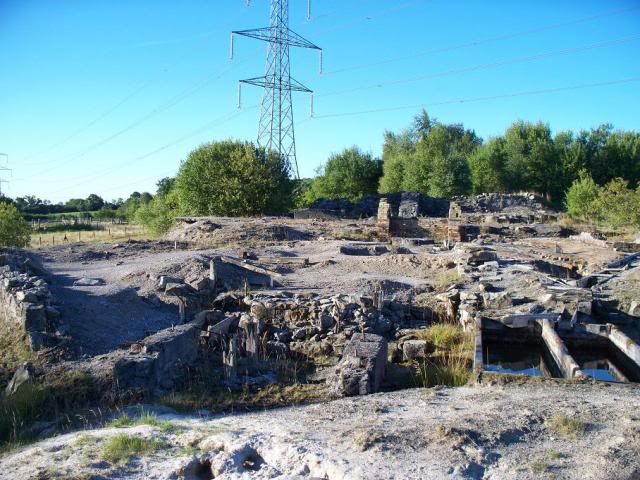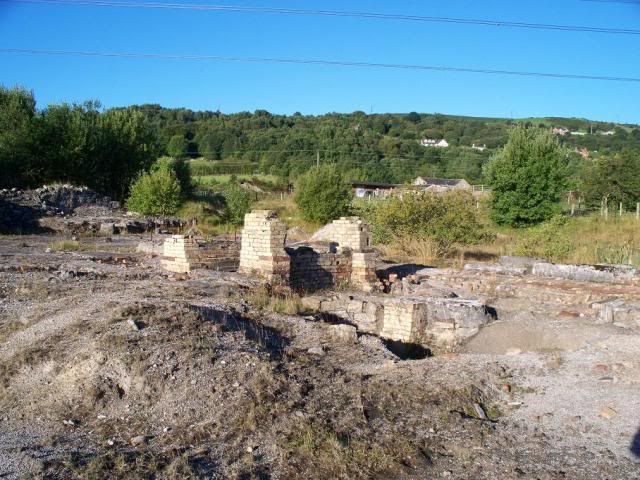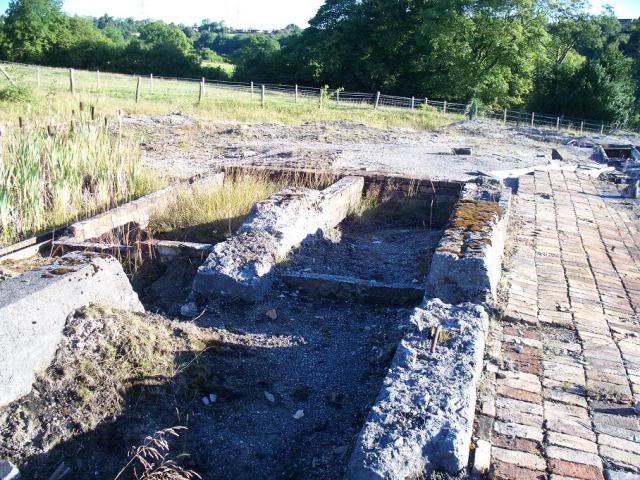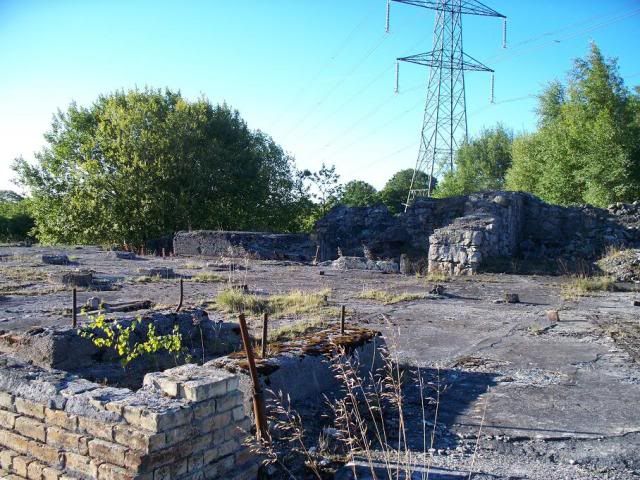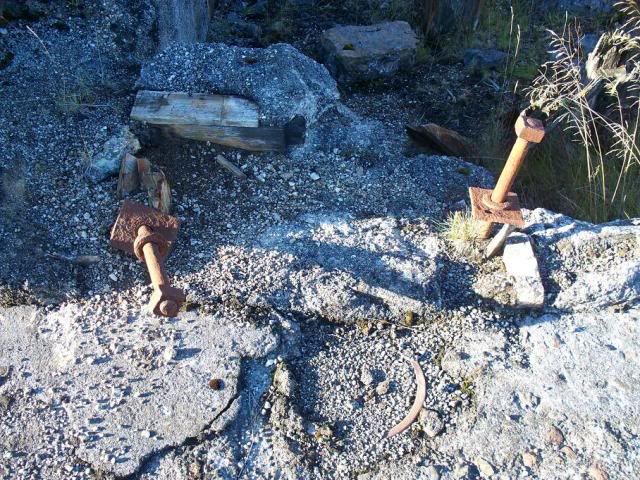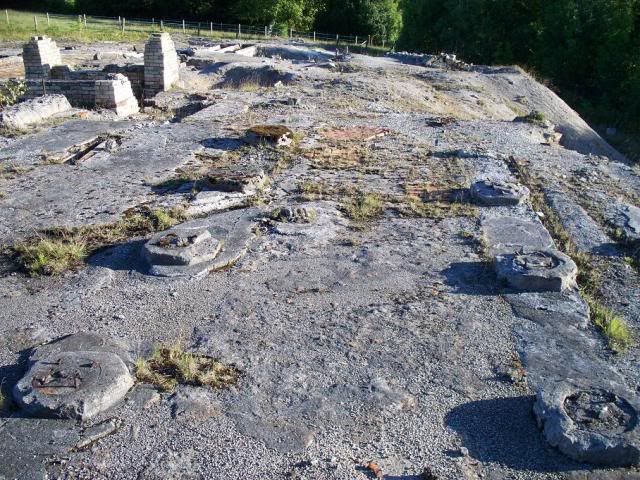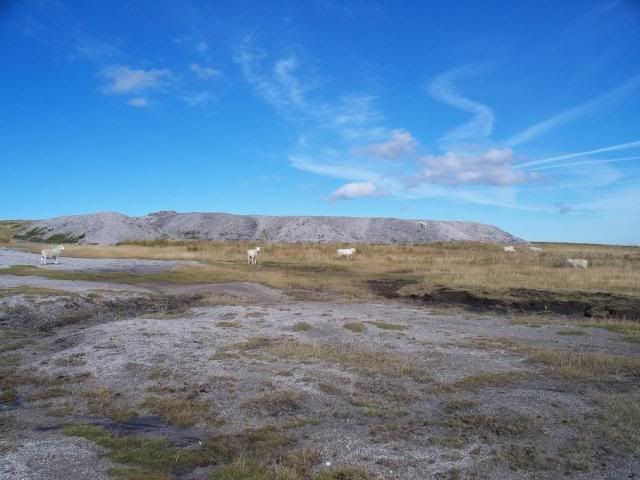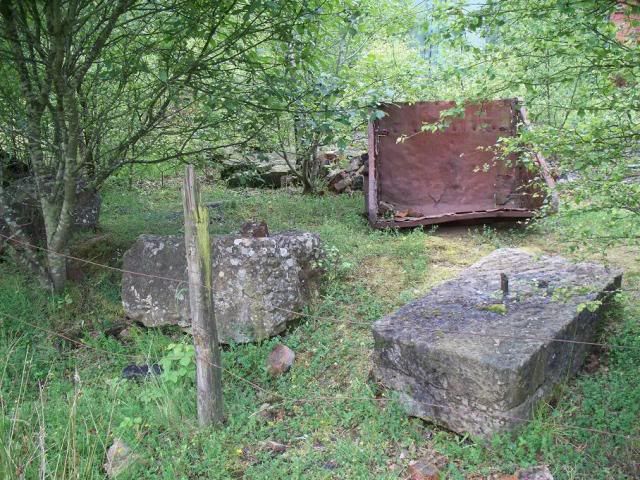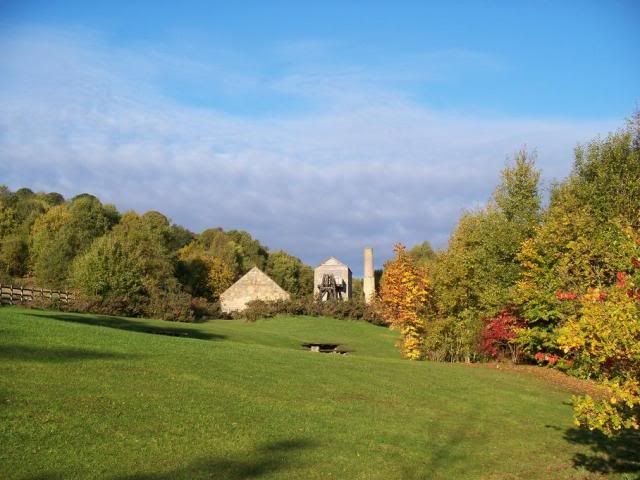And here we go again! Inaugurating a short series of blogs, I would like to take you on a brief tour of northern Shropshire that I had this weekend. Shropshire is one of those counties that is saturated with history, especially when you know where to look! So without further ado...here we go!
Oswestry, almost on the border with Wales, is the site of one of the biggest hillforts in the country. Hillforts are traditionally thought of as Iron Age enclosures, demonstrating a massive shift in the way societies existed in prehistory. I am planning to entertain you all with a Prehistory blog soon enough (I can hear the cheers already), so won't dwell on this for the moment.
^ hillforts are never that impressive when you look at them from ground-level...
Iron Age Britain was studded with hillforts of this sort much like Britain today is studded with towns, which is really how hillforts should be thought of. More accurately, I suppose, they were more like villages, as each fort would only support a small group by today's standards. The ramparts of Old Oswestry enclose an area of 21 acres, less than half the size of the formidable Maiden Castle down in Dorset.
^ the western entrance.
There is evidence of some Bronze Age occupation of the site, but the first phase of rampart-building seems to be dating to the sixth century BC, well into the Iron Age. As the centuries wore on, the ramparts were strengthened and increased, which may suggest increased importance for the site. It hasn't been proven with any real conviction, but it seems the hillfort was the site of a local stronghold for the Cornovii tribe.
The technical term for a hillfort of this type is "multi-vallate", which reflects the multiple ramparts used as defense. Hillforts were often sited on hilltops or high ground generally, but sometimes they had to be built up, which seems to be the case here. The comparison with the later Norman ringwork type of castle is therefore quite a strong one.
There is a unique feature to Old Oswestry that can be seen in the aerial photographs, a series of oblong holes within the ramparts at the western end. Nobody seems able to explain quite what their purpose was - water cisterns, storage hollows, or just further obstacles to confuse an invading enemy (or archaeologist...) The site was abandoned with the arrival of the Romans, and has lapsed into obscurity as most such sites did over the years, for a long time being covered in trees and so obscuring the ramparts from view.
^ ending with a classy shot, nothing like a bit of lens-flare!
The modern town of Oswestry, the third largest in Shropshire, is slightly to the west of the hillfort, and named after the Saxon King Oswald of Northumbria, who was killed in the battle of Maserfield (which is somewhere near here) in 642 while fighting King Penda of Mercia. Legend tells us that an eagle took his dismembered arm to a tree, which became the focal point of some miracles, named Oswald's Tree (y'see?) Oswald was, according to the Venerable Bede, one of the saintly Christian kings and so was later made a saint, with his feast day on 5 August. The local church is dedicated to St Oswald, naturally.
But there still wasn't much here. The Norman Conquest came and went, and Domesday Book tells us a chap called Reginald, the Sheriff of Shropshire, had "built the castle of Oswestry" in Maesbury, which was held by Roger de Montgomerie (the Marcher Lord of Shropshire) There will be more on Earl Roger in a later blog. Domesday Book also makes mention of little else here - "There is a church... There is a little wood rendering nothing." It seems that Norman Oswestry was, to begin with, just a motte-and-bailey castle, and nothing more...
It was Henry I, grandson of William the Conqueror, who gave the lands of Oswestry to Alan fitzFlaad as a feudal barony, and in 1148 the castle was rebuilt in stone. From this, the borough of Oswestry began to grow. Alan's duties, in return, were basically to hold the border against the frequent Welsh incursions. And frequent they were. Shropshire has the densest concentration of castles of any British county, 32, possibly a combination of the fact it has a long border with Wales, and also Earl Roger was particularly ruthless in dealing with cross-border raids.
Oswestry Castle doesn't have all that much to look at today, granted, but I kinda like it, all the same!
The town was originally walled and gated, which didn't really help when the Welsh came raiding, and it was razed on at least two separate occasions in the fourteenth century and again early in the early fifteenth century. With the outbreak of the Civil War, Shropshire declared for the King, and Oswestry was besieged in 1644, after which the Parliamentarians tore down the walls and slighted the castle with some zeal.
^ Bailey Street, perhaps the site of the bailey? Surely it can't be that obvious?!
Wandering around the town now, you can still get a vague sense of the earlier town from the meandering streets that wind their way around and through the centre, but there aren't all that many sites of historical significance that shout out their presence, sadly.
^ Llwyd Mansion, which dates to the seventeenth century.
There are, of course, the odd exceptions! The town has a bit of a mix of architectural styles, reflecting the impact different eras had on it. Perhaps one of the more important things to happen to Oswestry was the coming of the railway in the Victorian era, when the town was on the main line of Cambrian Railways. Closed in 1966 thanks to Dr Beeching and his meddling, the headquarters building is now a railway museum.
I didn't realise Wilfred Owen, the celebrated war-poet, was born here, actually:
From Oswestry, we proceed east! First of all, we come to Whittington Castle.
Believed to have started life as a Norman manor house, the lands were given to William Peverell, who was possibly an illegitimate son of William the Conqueror. It was originally constructed as a motte-and-bailey affair in around 1138 as a fortification against King Stephen during the Anarchy.
The castle had come into the FitzWarin family in 1204, and they were the ones largely responsible for its growth in this time. When the Welsh Prince Llywelyn the Great invaded England and occupied the Severn Valley, he destroyed the castle, but the FitzWarins regained their lands and rebuilt the castle in the 1220s in stone.
Despite the fact that it's in a very nice part of the country, Whittington Castle seems to have been neglected by its owners - in fact, the castle was swapped in 1545 with Henry VIII for some monastic land down in Devon. Somehow, you can't help but feel a little bit sorry for it! Particularly as the castle, as remodelled in the fourteenth century, is a very important example of English gardening habits. See, it is believed that, around this time, there were two elaborate gardens created, all fancy-like with water and such, with quite possibly the earliest-surviving viewing mound in England to survey them from (though the gardens have long gone):
At the time the castle was swapped, it was said to be in "much decay", and by the time of the Civil War was most likely indefensible anyway, so played no part. In 1760, one of the towers fell into the moat, which brought about the end really, when the majority of the castle was plundered for building stone, a lot going in to building the road to Ellesmere.
Which is where we end up next! Ellesmere started out in the eleventh century when a castle was built here by Earl Roger. Another border castle, Ellesmere traded hands at a rate of knots, at one time being ruled by Madog ap Maredudd, the last Prince of Powys, until in 1160 when Madog died (at Whittington!) it came into the hands of Henry II. When Llywelyn the Great married Joan, the daughter of King John in 1205, Ellesmere was given to them as a wedding gift.
^ the bailey, looking towards the motte (which is behind the trees to the left)
The castle was held by Llywelyn until his death in 1240, then passed to Henry III, who in turn entrusted it to the Lestranges of Knockin. By the fourteenth century, however, the castle was abandoned.
^ the bailey, with the mere just glimpsed behind the trees there.
That is has been abandoned so long makes it all the more remarkable really that the earthworks have survived so well, I think! That said, the summit of the motte is crowned rather ignominously, with a bowling green:
Ah well. Ellesmere is, of course, famous for its canal. Well, and the mere! The Ellesmere Canal links all of the industrial sites in Shropshire, providing transport between the Severn and the Mersey, terminating at the seaport of Ellesmere Port. The enterprise, presided over by no less a man than Thomas Telford, was never completed due to the railway boom, and the surviving sections became incorporated into the Shropshire Union Canal.
The mere at Ellesmere is one of the largest natural meres outside of the Lake District. A mere is simply a lake that is broader than it is deep, and the one at Ellesmere is one of nine glacial meres in the area.
What is a glacial mere, I hear you all cry out? Well, I'm no geographer, but I'll try to explain. When the glaciers began to retreat during the end of the Ice Age (10000 years ago, apparently), it appears that most did so leaving behind pockets of ice in depressions between hills etc. These depressions, when the ice melted, formed glacial lakes, some of which have since dried up, but some remain to this day.
The mere at Ellesmere has in it an artificial island, created in 1812 when the gardens at Ellesmere House were being constructed. This island was named Moscow Island, in honour of Napoleon's forced retreat during the winter of 1812 (you all know the Tchaikovsky overture that celebrates this event, I'm sure...)
^ the lump of trees just to the right of the centre covers Moscow Island.
Onwards! I'm going to end this first leg of my Shropshire Summer Tour with the market town of Whitchurch. Signposted from pretty much everywhere, you'd be forgiven for thinking the town to be some sort of immense nexus of something, but it is actually just a quiet little border town that happens to be near a crossroads. It is, reputedly, the oldest continually-inhabited town in Shropshire, with a history going back to the first century AD under the Romans, when it was named Mediolanum. Very little of this period survives, though there is a wall course near the church that follows the line of one of the original forts here:
The town was called Westune in Domesday Book, held by William de Warenne, one of the chaps who is known to have fought at Hastings in 1066 and a name that frequently crops up in the Book. He was given A LOT of land post-conquest, including the landing site of Pevensey in Sussex. The town was reported as being worth £10 in 1086, with enough forest for fattening 400 pigs! The name of the town itself is believed to stem from the White Church that was built here in the Norman period, on the site of an earlier church, believed to have been founded in about 912. The present church of St Alkmund was rebuilt, after the medieval church collapsed, in 1712 and is quite striking for the massive windows it has (at least, I was struck!)
^ a very Classical church - I wonder what Pugin would have said...
Wandering the streets of Whitchurch on a sunny Sunday morning, I was fleetingly reminded of my trip to Nantwich in June. There may not have been quite the proliferation of black-and-white buildings, of course, but still, it was most pleasant!
^ Ellesmere House
^ Mansion House - okay, so not a black-and-white building, but still interestingly Georgian!
^ Whitchurch is the home of JB Joyce Clocks, founded in 1790 and producers of clocks to the world - there are Joyce clocks in Singapore and Kabul, according to Wikipedia! The only other one I'm sure of is in Chester...
^ the High Street.
^ wonderfully bulging shopfronts :)
^ the Bear Inn
Whitchurch suffered badly during the Glyndwr rebellion (I'm sure that'll be a blog soon!), being almost completely destroyed in 1404. During the civil war, Whitchurch declared for the King and was taken by Parliamentarian forces in 1643. Prince Rupert himself led the recapture of the town the following year, no doubt with Boy cradled in his arm. Ah, Prince Rupert, what a barmy guy, riding into battle with a poodle under his arm! Anyway. Whitchurch was also the birthplace of the composer Edward German, famous for his English operas composed much in the same idiom as Arthur Sullivan (whose The Emerald Isle he completed). He was born in what is now the Old Town Hall Vaults pub:
So there we have it, that's trip one of my planned Shropshire Summer out of the way! I do hope you enjoyed it as much as I did - and don't forget to check back again soon for more thrilling installments!!!
Tuesday, 31 July 2012
Ah, Shropshire! (part one)
Labels:
castle,
ellesmere,
england,
heritage,
History,
Motte,
oswestry,
ruins,
shropshire,
tourism,
whitchurch,
whittington
Location:
Shropshire, UK
Thursday, 19 July 2012
Minera!
Following on from the success of blog #8, I thought I'd stay in the locality for my 9th endeavour, and present: Minera. I feel I should warn you, I have been researching this place for years, exhaustively, so I may go on a bit...
The small village of Minera, to the west of Wrexham, is today a quiet little place, but going back 150 years or so, it was one of the industrial centres of Britain. It has been postulated that lead mining took place here in Roman times ('Minera' derives from the Latin for 'ore'), but the first recorded instance is Edward I sending lead miners to Cornwall to help with the local tin industry there in 1296. Mining on a recognisably industrial scale began in the 1760s. The Chester butcher Owen Jones, a major landowner in the area, had died in 1659, bequeathing his lands to the city companies for the benefit of the poor of Chester, and initially these lands were let for agriculture.
^ the 'Owen Jones Boundary Stone', marking the extent of the lands granted.
Maesyffynnon Shaft is at the west end of the main Minera leadmines. There are three distinct areas of lead mining in the area - the Eisteddfod setts directly to the west of Minera village and north of the limestone quarry, the mines on Esclusham mountain to the south of the quarry, and the area of 'Minera mines' to the east of Esclusham mountain and south of Minera village. For the purposes of this blog, I'll focus on the east end of the 'Minera mines', which forms something of the 'main attraction', as you shall see.
First, a bit of geology. Lead ore, or galena, is often to be found in the midst of limestone, and most of this area lies on a limestone outcrop. Other minerals most often found in galena alongside lead include silver and zinc, and the leadmines at Minera tended to mine all three variously. Deposits of lead ore run vertically in veins, or ribs, (rather than horizontally in galleries, as with coal), meaning shafts tend to be quite deep, and very prolific. In fact, Minera has the distinction of having the deepest metal-mine shaft in the former county of Clwyd, with Meadow Shaft running to 1220ft.
The problem with lead mining, however, is that limestone is a porous rock, so it can be a very wet experience. In fact, most of the mining activity pre-1845 was halted because of flooding in the mines. The solution is to run a drain, called an 'adit', or 'level', horizontally from the shaft out. This sort of enterprise can cost a lot of money, however, depending on where you are within the earth, and often it was more expense to create such a thing than you could make from the extraction of ore.
In 1845, however, the Minera Mining Company was formed by John Taylor & Co. John Taylor was a mining engineer who had already worked wonders with the tin industry down in Cornwall, and was possibly responsible for the introduction of the circular buddle to northeast Wales at this time. Under the direction of Taylor and his son, also John Taylor, Minera began churning out ore at truly industrial speeds - between 1845-1938 Minera formed 13% of the total British lead output, and 27% of the zinc output. The secret to their success was Deep Day Level:
(^ it's the black hole to the far right of this picture)
Not particularly exciting, is it? Well, this little hole allowed the company to sink shafts all over the place, all connected to the day level, and so flooding wouldn't incapacitate the mining activity. Two men were employed full-time to keep the levels free from any detritus and ensure they would always drain the mines well. The early AGM reports make frequent mention of how Deep Day Level has been extended, showing how important this was to the successful operation of the mines.
^ Deep Day Level spilling out into the Clywedog.
Digging the level was also a useful way of finding the extent of lead ore deposits.
In 1849 the mines were open for business. The Minera Mining Co. worked primarily at the site now called Taylor's Shaft. During the mid-19th century, this was Minera Leadmines.
^ a general view of the remains at Taylor's Shaft, those to the south of the mineral railway.
^ the capped shaft, 810ft deep.
^ the boiler house, with the stub of the chimney at the back.
^ the boiler house again, the ash tunnel in the centre here leads out onto the dressing floors to the north. In its later history, it was used as the miners' dry (like a lockeroom), with a lot of personal possessions found here. The new boiler house was installed in the 1870s in front of the engine house:
^ the balance-bob pit, the balance box being loaded to 25 tons.
^ the foundations of the engine house (to the left), the shaft (to the right), with the boiler house and chimney in the background.
^ view across the boiler house, better showing the engine bed in the centre there.
^ Taylor's Shaft was worked by an 80in engine called the 'Miner's Mate', the largest engine on the sett. At the time of the excavations, the outline of this engine was visible as a rust mark on the engine bed (above), but I can't see it now. Ah well!
^ sometime in the 1880s Taylor's Shaft converted to steam winding, and this I believe to be the foundations of the engine house for this.
^ a general view of the main workings, with the tantalysingly-named "mine building #2" in the foreground.
^ "mine building #1", with the workings in the rear. I have no idea what either of these buildings were for, they were possibly connected with the joiner's shop/fitter's shop/stores/saw mill that make Taylor's Shaft the "outstanding example" of a lead mine that it was scheduled for!
^ the dressing floors of Taylor's Shaft, situated below the railway.
^ the run of ore bins to the north of the mineral railway.
^ I'm going to go out on a limb here and call this the mine office. Of all the buildings at the Taylor's Shaft site, this is the only one that has a nice flagstone floor. I'm not sure what the recess at the back there is, though.
^ general view of the dressing floors.
^ the smithy, to the south of the main workings. Often used as a mortuary, as it was out of the way I suppose.
^ high up on the way to Park Leadmines on Esclusham Mountain, the water reservoirs used by Taylor's Shaft.
^ Speedwell Shaft is underneath this red-brick building, built in the 1930s by Dee Valley Water, who retain rights to this day to source their water from the leadmines here. There's an encouraging thought!! The famous photograph of Simon Hughes at Minera was taken of him in Speedwell Shaft.

^ Lloyd's Engine House, with the capped shaft in the foreground (and slightly to the left).
^ the capped shaft at Andrews, with Lloyd's Engine House just made out to the left in the middle-distance here.
All of these were pre-existing shafts that were reopened by the Minera Mining Co, except Roy's and Ellerton's, both of which were named for early mine managers and were sunk in 1850 and 1852 respectively.
^ I believe this morass of foliage behind the fence here masks Ellerton's Shaft. Though I can't be positive, sorry!
^^ & ^ the remains at Roy's Shaft
The extent of the Minera Mining Co. workings led to a need for effective transport between the sites, the mineral railway (I've already alluded to this). It ran across the entire sett, was extended when necessary, and connected the leadmines to the Chester-Shrewsbury railway line. Today, the line forms the main footpath through the country park.
^ the sidings to the south of Meadow Shaft.
^ the dressing floors at Roy's, right next to the course of the mineral railway.
^ the line of the railway running west, towards Royle's and Reid's Shafts, and the limeworks.
^ the fixings for the railways sleepers can be clearly seen in this west-end part of the footpath.
The power of steam was introduced to the mines in the late 1850s, with engines installed at Meadow Shaft in 1858 and Taylor's Shaft the following year. These engines were used to power rope winders to pull up the ore, and the pumps that kept the mines dry - the men used a series of ladders for access to the mines. The ore was pulled up in buckets (known as 'kibbles'), formerly by a horse whim (or gin) circle. This basically involved a horse pulling a rope that was wound around a device rather like a big cog, although men were sometimes used instead to push the spokes around in a circle themselves. Because of the conversion to steam of so many of the mines here, these whim circles don't survive any longer, but there are two very well-preserved examples up on Esclusham Mountain, at the Pool Park mines.
^ Meadow Shaft, with the Ore House to the left, the engine house and main shaft workings in the centre, and the dressing floor sweeping from the centre off to the right.
^ the boiler house, with the brick foundations of the boiler beds.
^ the superbly preserved two-tier chimney.
^ the coal store, to the left of the boiler house.
The steam was then fed into the engine, housed within the Engine House.
^ see the window above the door on the left? That was where the steam was funneled into the engine.
The shaft at Meadow Shaft was oval, 7ft x 8ft, and divided into two, with one half for pumping and the other for lifting ore and access.
^ I've often wondered why there is a door opening out right into a 1220ft-deep mineshaft...
^ the pumping rods used to pump water from the shaft into the launder, which is hidden in this photo by the beam connecting the pumping rods to the balance box:
^ the balance box, loaded to 15 tons, used to counterbalance the pumping rods used in the shaft. The launder runs across the centre of the above photo.
The engine, 40in, worked at three strokes per minute and could manage four bucket lifts. It wasn't the only steam engine on the site, however - a second engine on the dressing floor, 20in, was used to power the rope winder and rock crusher. The winding business is the process of pulling up the ore in kibbles: the massive flywheel on its wooden frame in front of the engine house turned around a rope fed from the rope drum pit on the dressing floor:
^ the engine and boiler house, a much smaller affair than that at the pit head, installed in 1858.
^ from left to right we have: the rope drum pit; the gear pit (now with a bush growing out of it), where the power generated by the engine was transferred through the gears to the rope winder and the crushing rolls; and the crusher house. The angle is slightly off here for you to appreciate the relationship between the rope winder and the flywheel.
Prior to all this wonderful use of steam to power the winding, a capstan worked the shaft, though there is now no evidence of this:
^ told ya!
The ore was brought to the surface as mentioned, and then shuttled from the pit-head to the ore bins. On this 'picking floor', women and children would sort through the buckets and separate the good stuff from the waste material, or 'gangue'.
^ the tramways leading to the picking grates.
Smaller pieces were passed through to the dressing floors, where it would be cleaned on-site. Water, pumped directly from the mine by the steam engine, was channeled along wooden launders to the picking grates, where it was used to wash the waste from the ore.
^ wooden launders channel water into a tank (centre), where it can be used to wash the ore as it tumbles from the ore bins onto the dressing floor.
This principle also applied to the jig-box, a hand-operated piece of machinery where the lead ore was placed in a small cage within a larger box of water, and 'jigged' up and down to loosen the waste.
^^ The jig-box with the picking floor behind
^ The jig-box basket
Larger rocks were bashed with hammers to be picked over again, or later taken by an inclined tramway to the crushing house, where it would be fed between two metal rollers and crushed into more manageable sizes:
^ the incline to the crusher house
Water was also used to operate the circular buddle, mentioned a while back. The premise of this machinery was to use a big brush to wash the gangue from the ore, having a waterwheel turn the brushes, which moved over the ore held in a circular basin-type structure:
The ore could then be retrieved and any waste water was channeled to a further settling tank, in case any of it was missed:
And this is the comparative view of Meadow Shaft:
The shaft is always to the fore, with the engine house behind, the boiler house to the right and slightly behind, the balance box pit in front of that. Anyway!
To the immediate west of Meadow Shaft, the next mine you come across is Brick Shaft. I must confess, I've been able to find out nothing about who worked this shaft, and when, but there are similar remains to those at Roy's which, taken with its location close to the mineral railway between Meadow and Taylor's Shafts, I will assume it was the Minera Mining Co. who were responsible:
Some, however, are nameless - such as the "number 6 shaft" (the aforementioned Speedwell Shaft is also known as "number 7 shaft") to the immediate east of Meadow Shaft, visible from the footpath between the car park and the visitor centre:
The 1870s saw the introduction of compressed air drills to the mines, the invention of John Darlington, author of the highly influential 'On rock drills and hydraulic machinery for mines'. A compressor house was built to the south of Meadow Shaft to provide the air for this purpose, though nothing survives of this today.
^ what I believe to be the site of the compressor house, though I'm not 100% sure.
To the far west end of the mines operated by Minera Mining Co. were three further shafts, Reid's, Royle's, and Hydraulic.
^ the woods at the west end of the sett, much more than the consolidated areas of the eastern end, are full of junk like this. It probably isn't, but it's tempting to think this might be the timber-built mill building with corrugated iron roof advertised as lot 463 in the sale catalogue of 1914 (see below).
^ the now rubbish-filled Hydraulic Shaft, once worked by Darlington's hydraulic water pump.
The most important addition to the site in this decade was the Halvans Plant, set up in 1872-4. Now, as stated earlier, lead ore is found in limestone, and mining this underground often means cleaving huge chunks of rock, some of it ore and some of it junk, or halvans. Following exceptionally good years, the 1870s began to see a downturn in the reserves of ore, so the company set about looking through their waste piles (spoil tips) to see if they missed some in the first instance.
^ the primary crushing house.
^ the foundations of one of the circular buddles.
^ one of the convex centre-heads of the buddles - these were shaped to distribute the halvans into the buddle.
^ the ore bin.
Even though this is still early in the decade, it seems to show a note of panic creeping into the mine-owners, trying to recover anything they could. It wasn't until 1878 that the price of lead ore began to drop significantly, which continued on until it hit rock bottom (if you'll pardon the pun) in 1885.
The 1880s saw the introduction of fully up-to-date processing machinery at Roy's Shaft (in 1884), and the construction of a lead smelting works on the mountainside south of Meadow Shaft (in 1888, though it closed five years later).
^ remains of the dressing floors at Roy's Shaft.
^^ & ^ the stub of the smelter chimney, the only remains of the Smelt Works at New Broughton.
^ even up here, there's no escaping the orange splashes.
Also in this decade, another company emerged on the scene, New Minera Mining Company, formed in 1888 and sinking its first (and only) shaft to the east of Meadow Shaft, at Burton's Shaft, the following year. This shaft bottomed out at 966ft. Despite a profit of £2181 reported after its first year of production (£185000 in 2010), mining had ceased in 1894, and instead the company concentrated on dressing what ore they had already raised.
^ a general view of Burton's Shaft.
^ the capped shaft. Quite why it has such a luxuriant cap, I don't know!
^ a general view north-west over the site
^ Burton's Shaft has some wonderfully well-preserved wooden structures, such as this launder.
^ looking south. Among the mess you can see the jig boxes on the left, at least.
^ I have no idea what this is, but as it's a structure not encountered at the other sites, I'm inclined to say it's associated with the vanning process (see below)
^ it's always good to see mounting bolts in situ!
^ I'm tempted to call this an engine bed, as it looks very impressive. But I don't honestly know.
^ a general view of the spoil tips. There is a photograph in the records office that shows Minera looking south from around this area, where the spoil tips were immense. More like those up on Esclusham Mountain associated with Park Leadmines:
However, even this little boon couldn't save the companies, and in 1895 Minera Mine Company went into liquidation, followed by New Minera the year after. From the ashes, however, a new company was formed, United Minera Mining Company, in 1898. This company focused its efforts on Burton's and Meadow Shaft, linking the two underground at the 430-yard level. This was primarily because Meadow Shaft had bottomed out at 1220ft, hardly an ideal distance to wind ore up from. So the ore was wound up partially in Meadow Shaft, then run along an underground tramway to Burton's, where it was wound up to the surface in trams, the only shaft to do this.
It was in the 1890s that George Wynne took over as mining engineer from Henry Dennis, and began introducing new machinery to the mines as and when he had time to invent it. It is to Mr Wynne that we can credit the introduction of vanning at Burton's Shaft. Vanning is one of the more bizarre methods of ore recovery that I have come across - the small particles of ore are washed on the blade of a shovel and then tossed in the air, which apparently separates them. I suppose it's a similar principle to the jig box, though.
The manager's reports at the United Minera AGMs for the early years of the 20th century show an almost desperate urgency to find ore. Not only are levels being dug all over the place to search for ore, but they also begin digging into the roof of existing levels to go back up and look there, too. The analogy of a Swiss cheese isn't far off the mark, it would seem.
1907 saw a real shock for the lead mines, as the price of dressed ore rose to £14/ton, the same price it held in the 1850s and 1860s. This doesn't last, of course, and the mines now begin to close. Taylor's Shaft, the main centre of mining since the 1850s, stops work in 1908, its cylinder being sold to a Cornish company. Roy's Shaft closed in 1913. Meadow Shaft's pumping engine was sold in 1910 for scrap, the shaft finally closing in 1914. Burton's Shaft remained valiantly open until the bitter end, finally closing in 1919 and the company was put into liquidation.
I'm not entirely sure how Burton's Shaft remained in operation until 1919 when the company's assets were all sold at auction between 26 and 27 November 1914 - including the timber pit-head frame, horizontal engine cylinder and accoutrements, crushing rolls, vanner, jig boxes and buddle, and a 'timber-built mill building' were all sold from Burton's Shaft. The catalogue of sale is quite exhaustive, even down to selling the sleepers from the mineral railway, and boxes of nails, 'sundry spanners', even two wheelbarrows at Ellerton's shaft. GF Wynne remained at the site, operating a gravel works from the spoil tips for a while. But largely the site, which had once been redolent with the sounds of heavy industry, just decayed steadily. It wasn't until the 1980s that Clwyd County Council undertook a programme of land reclamation, making safe the area around the leadmines, capping shafts and clearing away any potentially harmful heavy-metal remains. During the archaeological excavations, lead by the late David Bick, uncovered the fantastically well-preserved Meadow Shaft dressing floors, which led to a programme of reconstruction of many of the machines, roofing the engine house, and making available for public display a lot of the interesting stuff that you can see today! Marvellous!
Labels:
industrial archaeology,
lead mining,
mine shaft,
Minera,
ruins,
tourism,
Wrexham
Location:
Minera, Wrexham LL11, UK
Subscribe to:
Posts (Atom)

